Shows
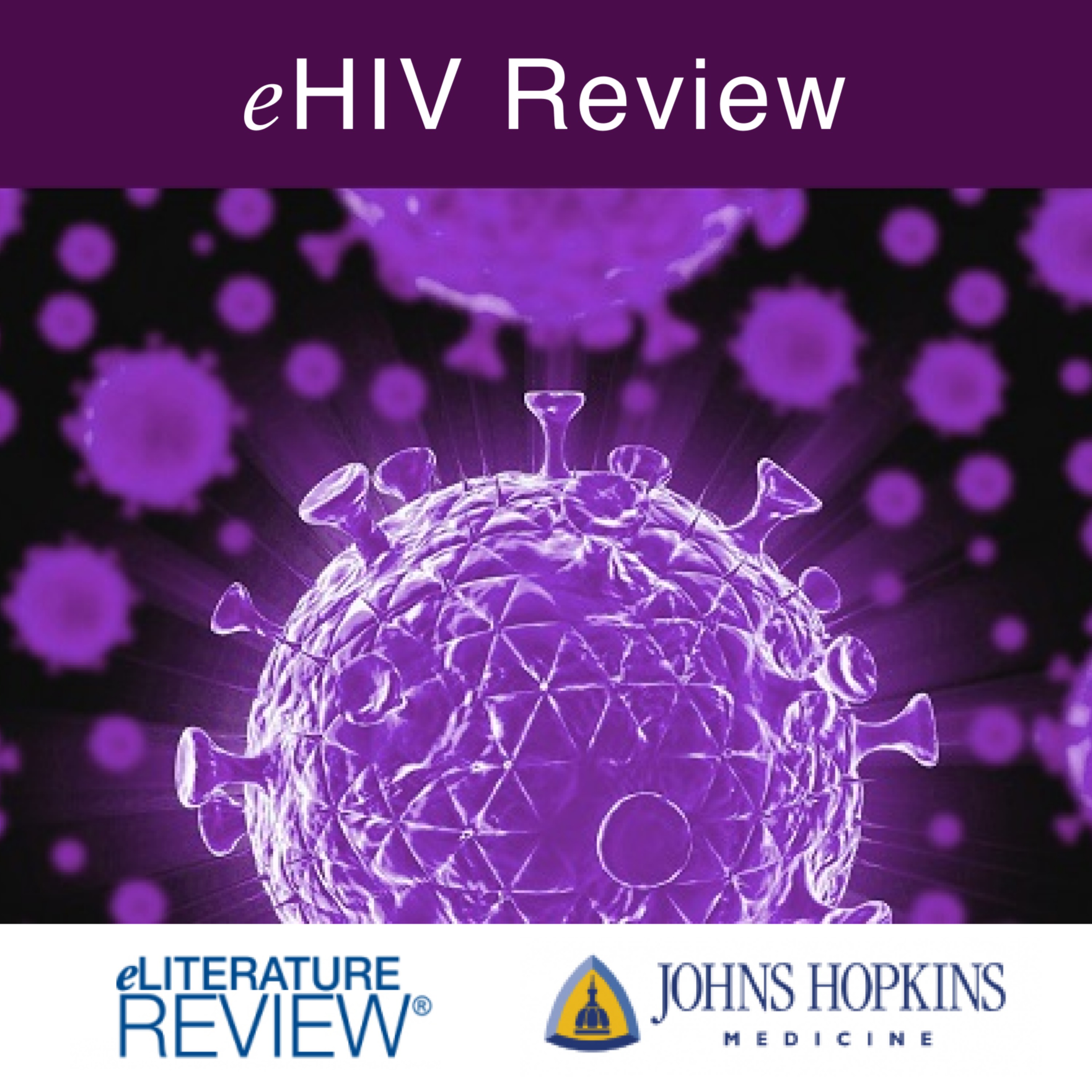 eHIV ReviewNew Directions in Long-Acting ART and Long-Acting PrEPHow will the current research advancements in long-acting ART affect clinicians’ ability to provide better care for their patients with HIV? The recent data show that the low uptake and adherence to PrEP may be largely due to the pill burden and potential stigma of daily dosing. How might the newer longer-acting PrEP regimens challenge this reluctance?Post-test for CME credits: https://elit.dkbmed.com/issues/226/test Hosted on Acast. See acast.com/privacy for more information.2025-03-2840 min
eHIV ReviewNew Directions in Long-Acting ART and Long-Acting PrEPHow will the current research advancements in long-acting ART affect clinicians’ ability to provide better care for their patients with HIV? The recent data show that the low uptake and adherence to PrEP may be largely due to the pill burden and potential stigma of daily dosing. How might the newer longer-acting PrEP regimens challenge this reluctance?Post-test for CME credits: https://elit.dkbmed.com/issues/226/test Hosted on Acast. See acast.com/privacy for more information.2025-03-2840 min eHIV ReviewPLWH & SUD: A Clinical PerspectiveThe primary health concern for all individuals living with HIV should be managing their disease, particularly maintaining adherence to their ART treatment. Yet for many, the more immediate demands of their substance use disorder — whether for stimulants and/or opioids — take precedence and can readily become the central focus of their lives. What signals can help a clinician recognize a substance use disorder? How can they differentiate a clinical SUD from intermittent (even though harmful) substance use? What evidence-based treatments should they consider?Post-test for CME credits: https://elit.dkbmed.com/issues/217/test Host...2024-12-1031 min
eHIV ReviewPLWH & SUD: A Clinical PerspectiveThe primary health concern for all individuals living with HIV should be managing their disease, particularly maintaining adherence to their ART treatment. Yet for many, the more immediate demands of their substance use disorder — whether for stimulants and/or opioids — take precedence and can readily become the central focus of their lives. What signals can help a clinician recognize a substance use disorder? How can they differentiate a clinical SUD from intermittent (even though harmful) substance use? What evidence-based treatments should they consider?Post-test for CME credits: https://elit.dkbmed.com/issues/217/test Host...2024-12-1031 min eHIV ReviewPLWH: Overcoming Post-Incarceration Care DisengagementPeople living with HIV who’ve had criminal legal involvement face significant challenges that complicate their ability to remain in the HIV care continuum. Many, while incarcerated, have stopped treatment, and once back in the community have been reluctant to resume ART. Why? What are the key drivers behind their disengagement from care? What can clinicians do to encourage these patients to return to treatment? What strategies have been tried, and what’s been shown to work? What does the evidence say?Post-test for CME credits: https://elit.dkbmed.com/issues/213/test Hosted on A...2024-10-2220 min
eHIV ReviewPLWH: Overcoming Post-Incarceration Care DisengagementPeople living with HIV who’ve had criminal legal involvement face significant challenges that complicate their ability to remain in the HIV care continuum. Many, while incarcerated, have stopped treatment, and once back in the community have been reluctant to resume ART. Why? What are the key drivers behind their disengagement from care? What can clinicians do to encourage these patients to return to treatment? What strategies have been tried, and what’s been shown to work? What does the evidence say?Post-test for CME credits: https://elit.dkbmed.com/issues/213/test Hosted on A...2024-10-2220 min eHIV ReviewManaging HIV in an Aging PopulationWidespread use of highly effective ART has increased the life expectancy of people living with HIV (PLWH) to close to that of the general population. But despite highly effective viral suppression, the risks for cardiovascular diseases continue to increase in these individuals. So too do the risks of neurocognitive impairment.Post-test for CME credits: https://elit.dkbmed.com/issues/206/test Hosted on Acast. See acast.com/privacy for more information.2024-08-2328 min
eHIV ReviewManaging HIV in an Aging PopulationWidespread use of highly effective ART has increased the life expectancy of people living with HIV (PLWH) to close to that of the general population. But despite highly effective viral suppression, the risks for cardiovascular diseases continue to increase in these individuals. So too do the risks of neurocognitive impairment.Post-test for CME credits: https://elit.dkbmed.com/issues/206/test Hosted on Acast. See acast.com/privacy for more information.2024-08-2328 min eHIV ReviewManaging HIV Coinfections: HBV and TBCurrent ART regimens can successfully manage HIV infection in nearly all PLWH. But what happens when a patient with HIV is coinfected with a dangerous pathogen ART alone cannot handle? Two of the most common are hepatitis B and latent tuberculosis infection.Post-test for CME credits: https://elit.dkbmed.com/issues/203/test Hosted on Acast. See acast.com/privacy for more information.2024-06-2033 min
eHIV ReviewManaging HIV Coinfections: HBV and TBCurrent ART regimens can successfully manage HIV infection in nearly all PLWH. But what happens when a patient with HIV is coinfected with a dangerous pathogen ART alone cannot handle? Two of the most common are hepatitis B and latent tuberculosis infection.Post-test for CME credits: https://elit.dkbmed.com/issues/203/test Hosted on Acast. See acast.com/privacy for more information.2024-06-2033 min eHIV ReviewART, HRT, Pregnancy, and Menopause in Women Living With HIVPregnancy and menopause — for many women, these are two of the most significant healthcare events in their lives. For WLWH (women living with HIV) and their healthcare providers, managing these life-changing periods is often complicated by many questions.Post-test for CME credits: https://elit.dkbmed.com/issues/201 Hosted on Acast. See acast.com/privacy for more information.2024-06-0624 min
eHIV ReviewART, HRT, Pregnancy, and Menopause in Women Living With HIVPregnancy and menopause — for many women, these are two of the most significant healthcare events in their lives. For WLWH (women living with HIV) and their healthcare providers, managing these life-changing periods is often complicated by many questions.Post-test for CME credits: https://elit.dkbmed.com/issues/201 Hosted on Acast. See acast.com/privacy for more information.2024-06-0624 min DKBmed RadioClinical Approaches to Marginalized PopulationsIn part 1 of this eHIV Review Special Edition (still available at eHIVreview.org), eHIV Review Program Director Justin Alves, Nurse Educator at Boston Medical Center, reviewed the recent evidence describing some of the barriers to care experienced by marginalized individuals at risk for or living with HIV. In this Part 2 issue, he again calls upon two front-line clinicians in the fight to end the HIV epidemic in the U.S. — Nicky Mehtani, MD, from UCSF Medical Center in San Francisco, and Vanessa Loukas, NP, from Boston University’s Chobanian & Avedisian School of Medicine —to share their clinical approaches....2024-01-2435 min
DKBmed RadioClinical Approaches to Marginalized PopulationsIn part 1 of this eHIV Review Special Edition (still available at eHIVreview.org), eHIV Review Program Director Justin Alves, Nurse Educator at Boston Medical Center, reviewed the recent evidence describing some of the barriers to care experienced by marginalized individuals at risk for or living with HIV. In this Part 2 issue, he again calls upon two front-line clinicians in the fight to end the HIV epidemic in the U.S. — Nicky Mehtani, MD, from UCSF Medical Center in San Francisco, and Vanessa Loukas, NP, from Boston University’s Chobanian & Avedisian School of Medicine —to share their clinical approaches....2024-01-2435 min eHIV ReviewClinical Approaches to Marginalized PopulationsIn part 1 of this eHIV Review Special Edition (still available at eHIVreview.org), eHIV Review Program Director Justin Alves, Nurse Educator at Boston Medical Center, reviewed the recent evidence describing some of the barriers to care experienced by marginalized individuals at risk for or living with HIV. In this Part 2 issue, he again calls upon two front-line clinicians in the fight to end the HIV epidemic in the U.S. — Nicky Mehtani, MD, from UCSF Medical Center in San Francisco, and Vanessa Loukas, NP, from Boston University’s Chobanian & Avedisian School of Medicine —to share their clinical approaches....2024-01-2435 min
eHIV ReviewClinical Approaches to Marginalized PopulationsIn part 1 of this eHIV Review Special Edition (still available at eHIVreview.org), eHIV Review Program Director Justin Alves, Nurse Educator at Boston Medical Center, reviewed the recent evidence describing some of the barriers to care experienced by marginalized individuals at risk for or living with HIV. In this Part 2 issue, he again calls upon two front-line clinicians in the fight to end the HIV epidemic in the U.S. — Nicky Mehtani, MD, from UCSF Medical Center in San Francisco, and Vanessa Loukas, NP, from Boston University’s Chobanian & Avedisian School of Medicine —to share their clinical approaches....2024-01-2435 min eHIV ReviewAddressing the Needs of Marginalized Populations - MehtaniMarginalized individuals at risk for or living with HIV — the formerly incarcerated, immigrants, people with unstable housing, residents of rural communities, the rising number with substance use disorder — have long faced disparities in obtaining adequate health care. What do HCPs need to know to understand the unique needs of these underserved populations? How can they provide meaningful, helpful, and culturally sensitive care? What barriers continue to prevent their being brought into the HIV care continuum? Hosted on Acast. See acast.com/privacy for more information.2024-01-2404 min
eHIV ReviewAddressing the Needs of Marginalized Populations - MehtaniMarginalized individuals at risk for or living with HIV — the formerly incarcerated, immigrants, people with unstable housing, residents of rural communities, the rising number with substance use disorder — have long faced disparities in obtaining adequate health care. What do HCPs need to know to understand the unique needs of these underserved populations? How can they provide meaningful, helpful, and culturally sensitive care? What barriers continue to prevent their being brought into the HIV care continuum? Hosted on Acast. See acast.com/privacy for more information.2024-01-2404 min eHIV ReviewAddressing the Needs of Marginalized Populations - LoukasMarginalized individuals at risk for or living with HIV — the formerly incarcerated, immigrants, people with unstable housing, residents of rural communities, the rising number with substance use disorder — have long faced disparities in obtaining adequate health care. What do HCPs need to know to understand the unique needs of these underserved populations? How can they provide meaningful, helpful, and culturally sensitive care? What barriers continue to prevent their being brought into the HIV care continuum? Hosted on Acast. See acast.com/privacy for more information.2024-01-2402 min
eHIV ReviewAddressing the Needs of Marginalized Populations - LoukasMarginalized individuals at risk for or living with HIV — the formerly incarcerated, immigrants, people with unstable housing, residents of rural communities, the rising number with substance use disorder — have long faced disparities in obtaining adequate health care. What do HCPs need to know to understand the unique needs of these underserved populations? How can they provide meaningful, helpful, and culturally sensitive care? What barriers continue to prevent their being brought into the HIV care continuum? Hosted on Acast. See acast.com/privacy for more information.2024-01-2402 min DKBmed RadioHIV Stigma: A Psychologist’s ViewpointA wealth of evidence confirms that adolescents and young adults (AYA) are indeed a priority population whose needs must be addressed for the US Ending the HIV Epidemic program to be successful. What do providers need to know about AYA to bring more of these patients into the HIV care continuum? What should they be doing? And what should they avoid doing?Join us as guest author Dr. Vincent Guilamo-Ramos from the Duke University School of Nursing answers these and other questions, in this issue of eHIV Review.Post test for CME/CE c...2023-12-2230 min
DKBmed RadioHIV Stigma: A Psychologist’s ViewpointA wealth of evidence confirms that adolescents and young adults (AYA) are indeed a priority population whose needs must be addressed for the US Ending the HIV Epidemic program to be successful. What do providers need to know about AYA to bring more of these patients into the HIV care continuum? What should they be doing? And what should they avoid doing?Join us as guest author Dr. Vincent Guilamo-Ramos from the Duke University School of Nursing answers these and other questions, in this issue of eHIV Review.Post test for CME/CE c...2023-12-2230 min eHIV ReviewHIV Stigma: A Psychologist’s ViewpointA wealth of evidence confirms that adolescents and young adults (AYA) are indeed a priority population whose needs must be addressed for the US Ending the HIV Epidemic program to be successful. What do providers need to know about AYA to bring more of these patients into the HIV care continuum? What should they be doing? And what should they avoid doing?Join us as guest author Dr. Vincent Guilamo-Ramos from the Duke University School of Nursing answers these and other questions, in this issue of eHIV Review.Post test for CME/CE c...2023-12-2230 min
eHIV ReviewHIV Stigma: A Psychologist’s ViewpointA wealth of evidence confirms that adolescents and young adults (AYA) are indeed a priority population whose needs must be addressed for the US Ending the HIV Epidemic program to be successful. What do providers need to know about AYA to bring more of these patients into the HIV care continuum? What should they be doing? And what should they avoid doing?Join us as guest author Dr. Vincent Guilamo-Ramos from the Duke University School of Nursing answers these and other questions, in this issue of eHIV Review.Post test for CME/CE c...2023-12-2230 min eHIV ReviewAYA and Ending the HIV EpidemicA wealth of evidence confirms that adolescents and young adults (AYA) are indeed a priority population whose needs must be addressed for the US Ending the HIV Epidemic program to be successful. What do providers need to know about AYA to bring more of these patients into the HIV care continuum? What should they be doing? And what should they avoid doing?Join us as guest author Dr. Vincent Guilamo-Ramos from the Duke University School of Nursing answers these and other questions, in this issue of eHIV Review.Post test for CME/CE c...2023-12-0725 min
eHIV ReviewAYA and Ending the HIV EpidemicA wealth of evidence confirms that adolescents and young adults (AYA) are indeed a priority population whose needs must be addressed for the US Ending the HIV Epidemic program to be successful. What do providers need to know about AYA to bring more of these patients into the HIV care continuum? What should they be doing? And what should they avoid doing?Join us as guest author Dr. Vincent Guilamo-Ramos from the Duke University School of Nursing answers these and other questions, in this issue of eHIV Review.Post test for CME/CE c...2023-12-0725 min DKBmed RadioAYA and Ending the HIV EpidemicA wealth of evidence confirms that adolescents and young adults (AYA) are indeed a priority population whose needs must be addressed for the US Ending the HIV Epidemic program to be successful. What do providers need to know about AYA to bring more of these patients into the HIV care continuum? What should they be doing? And what should they avoid doing?Join us as guest author Dr. Vincent Guilamo-Ramos from the Duke University School of Nursing answers these and other questions, in this issue of eHIV Review.Take our post-test to claim CM...2023-11-2225 min
DKBmed RadioAYA and Ending the HIV EpidemicA wealth of evidence confirms that adolescents and young adults (AYA) are indeed a priority population whose needs must be addressed for the US Ending the HIV Epidemic program to be successful. What do providers need to know about AYA to bring more of these patients into the HIV care continuum? What should they be doing? And what should they avoid doing?Join us as guest author Dr. Vincent Guilamo-Ramos from the Duke University School of Nursing answers these and other questions, in this issue of eHIV Review.Take our post-test to claim CM...2023-11-2225 min eHIV ReviewDelivering High-Quality HIV Care to Cisgender and Transgender WomenWhy do cisgender and transgender women, and particularly women of color, account for such a disproportionate percentage of HIV infections in the US? Why are so many so reluctant to accept PrEP? What can clinicians do to bridge this critical gap in essential HIV services?These are some of the questions Guest Author Dr. Kathleen McManus, from the Division of Infectious Diseases and International Health at the University of Virginia, discusses in this issue of eHIV Review.Take our post-test to claim CME credits.Read this podcast's companion newsletter here....2023-08-0326 min
eHIV ReviewDelivering High-Quality HIV Care to Cisgender and Transgender WomenWhy do cisgender and transgender women, and particularly women of color, account for such a disproportionate percentage of HIV infections in the US? Why are so many so reluctant to accept PrEP? What can clinicians do to bridge this critical gap in essential HIV services?These are some of the questions Guest Author Dr. Kathleen McManus, from the Division of Infectious Diseases and International Health at the University of Virginia, discusses in this issue of eHIV Review.Take our post-test to claim CME credits.Read this podcast's companion newsletter here....2023-08-0326 min DKBmed RadioDelivering High-Quality HIV Care to Cisgender and Transgender WomenWhy do cisgender and transgender women, and particularly women of color, account for such a disproportionate percentage of HIV infections in the US? Why are so many so reluctant to accept PrEP? What can clinicians do to bridge this critical gap in essential HIV services?These are some of the questions Guest Author Dr. Kathleen McManus, from the Division of Infectious Diseases and International Health at the University of Virginia, discusses in this issue of eHIV Review.Take our post-test to claim CME credits.Read this podcast's companion newsletter here. Hos...2023-08-0326 min
DKBmed RadioDelivering High-Quality HIV Care to Cisgender and Transgender WomenWhy do cisgender and transgender women, and particularly women of color, account for such a disproportionate percentage of HIV infections in the US? Why are so many so reluctant to accept PrEP? What can clinicians do to bridge this critical gap in essential HIV services?These are some of the questions Guest Author Dr. Kathleen McManus, from the Division of Infectious Diseases and International Health at the University of Virginia, discusses in this issue of eHIV Review.Take our post-test to claim CME credits.Read this podcast's companion newsletter here. Hos...2023-08-0326 min DKBmed RadioNewer NNRTI Agents in Clinical PracticeNon-nucleoside reverse transcriptase inhibitors (NNRTIs). Rilpivirine, in combination with cabotegravir, provides a long-acting injectable option for both treatment and PrEP. But what risk factors have been associated with virologic failure? Doravirine appears to provide a favorable impact on weight and lipid outcomes, but with a lower genetic barrier to resistance. Which patients is it right for and in which ones should it be avoided?Join us as we discuss Newer NNRTI Agents in Clinical Practice with Dr. Darcy Wooten from the Division of Infectious Disease at the University of California, San Diego, in this issue of eHIV Rev...2023-07-1127 min
DKBmed RadioNewer NNRTI Agents in Clinical PracticeNon-nucleoside reverse transcriptase inhibitors (NNRTIs). Rilpivirine, in combination with cabotegravir, provides a long-acting injectable option for both treatment and PrEP. But what risk factors have been associated with virologic failure? Doravirine appears to provide a favorable impact on weight and lipid outcomes, but with a lower genetic barrier to resistance. Which patients is it right for and in which ones should it be avoided?Join us as we discuss Newer NNRTI Agents in Clinical Practice with Dr. Darcy Wooten from the Division of Infectious Disease at the University of California, San Diego, in this issue of eHIV Rev...2023-07-1127 min eHIV ReviewNewer NNRTI Agents in Clinical PracticeNon-nucleoside reverse transcriptase inhibitors (NNRTIs). Rilpivirine, in combination with cabotegravir, provides a long-acting injectable option for both treatment and PrEP. But what risk factors have been associated with virologic failure? Doravirine appears to provide a favorable impact on weight and lipid outcomes, but with a lower genetic barrier to resistance. Which patients is it right for and in which ones should it be avoided?Join us as we discuss Newer NNRTI Agents in Clinical Practice with Dr. Darcy Wooten from the Division of Infectious Disease at the University of California, San Diego, in this issue of eHIV Rev...2023-07-1127 min
eHIV ReviewNewer NNRTI Agents in Clinical PracticeNon-nucleoside reverse transcriptase inhibitors (NNRTIs). Rilpivirine, in combination with cabotegravir, provides a long-acting injectable option for both treatment and PrEP. But what risk factors have been associated with virologic failure? Doravirine appears to provide a favorable impact on weight and lipid outcomes, but with a lower genetic barrier to resistance. Which patients is it right for and in which ones should it be avoided?Join us as we discuss Newer NNRTI Agents in Clinical Practice with Dr. Darcy Wooten from the Division of Infectious Disease at the University of California, San Diego, in this issue of eHIV Rev...2023-07-1127 min eHIV ReviewEmerging HIV Therapies and Potential Clinical Uses Hosted on Acast. See acast.com/privacy for more information.2023-04-3025 min
eHIV ReviewEmerging HIV Therapies and Potential Clinical Uses Hosted on Acast. See acast.com/privacy for more information.2023-04-3025 min DKBmed RadioStigma and HIV Care in LGBTQ+ PersonsStigma. What is it, and where does it come from? How do LGBTQ+ individuals, particularly those with HIV, experience it? How does stigma affect their mental health? What effect does it have on their engagement in HIV care? What do health care providers need to change to minimize stigma in their practices? These are some of the questions advanced practice nurse Dallas Ducar, CEO of Transhealth, discusses in this issue of eHIV Review. Take our post-test to claim CME credits.To read a companion newsletter click here. Hosted on Acast...2023-01-1220 min
DKBmed RadioStigma and HIV Care in LGBTQ+ PersonsStigma. What is it, and where does it come from? How do LGBTQ+ individuals, particularly those with HIV, experience it? How does stigma affect their mental health? What effect does it have on their engagement in HIV care? What do health care providers need to change to minimize stigma in their practices? These are some of the questions advanced practice nurse Dallas Ducar, CEO of Transhealth, discusses in this issue of eHIV Review. Take our post-test to claim CME credits.To read a companion newsletter click here. Hosted on Acast...2023-01-1220 min eHIV ReviewStigma and HIV Care in LGBTQ+ PersonsStigma. What is it, and where does it come from? How do LGBTQ+ individuals, particularly those with HIV, experience it? How does stigma affect their mental health? What effect does it have on their engagement in HIV care? What do health care providers need to change to minimize stigma in their practices? These are some of the questions advanced practice nurse Dallas Ducar, CEO of Transhealth, discusses in this issue of eHIV Review. Take our post-test to claim CME credits.To read a companion newsletter click here. Hosted on Acas...2023-01-1220 min
eHIV ReviewStigma and HIV Care in LGBTQ+ PersonsStigma. What is it, and where does it come from? How do LGBTQ+ individuals, particularly those with HIV, experience it? How does stigma affect their mental health? What effect does it have on their engagement in HIV care? What do health care providers need to change to minimize stigma in their practices? These are some of the questions advanced practice nurse Dallas Ducar, CEO of Transhealth, discusses in this issue of eHIV Review. Take our post-test to claim CME credits.To read a companion newsletter click here. Hosted on Acas...2023-01-1220 min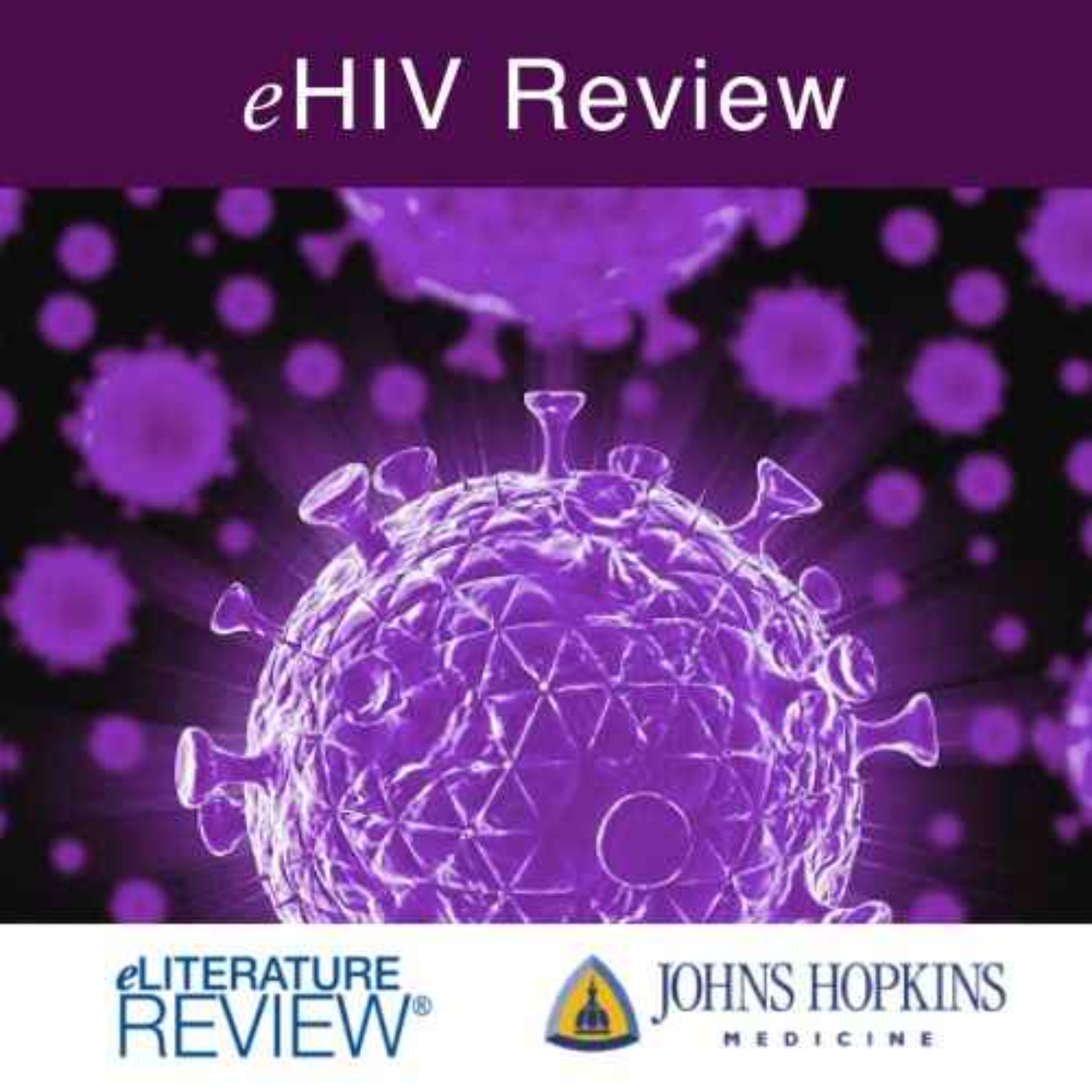 DKBmed RadioNewer Options for Treatment-Experienced Patients PodcastTreatment-experienced patients with RAMs — resistance-associated mutations — remain a difficult management challenge. Every case of HIV drug resistance requires a therapeutic regimen individualized for each patient’s ART history. How will new and in-development agents affect the equation?Which drug combinations are right? Where does the balance between side effects and adherence lie?These are some of the questions Dr. Brian Wood from the Division of Allergy and Infectious Diseases at the University of Washington in Seattle addresses in this eHIV Review podcast.Take our post-test to claim CME credits.To read a co...2022-10-1133 min
DKBmed RadioNewer Options for Treatment-Experienced Patients PodcastTreatment-experienced patients with RAMs — resistance-associated mutations — remain a difficult management challenge. Every case of HIV drug resistance requires a therapeutic regimen individualized for each patient’s ART history. How will new and in-development agents affect the equation?Which drug combinations are right? Where does the balance between side effects and adherence lie?These are some of the questions Dr. Brian Wood from the Division of Allergy and Infectious Diseases at the University of Washington in Seattle addresses in this eHIV Review podcast.Take our post-test to claim CME credits.To read a co...2022-10-1133 min eHIV ReviewNewer Options for Treatment-Experienced Patients PodcastTreatment-experienced patients with RAMs — resistance-associated mutations — remain a difficult management challenge. Every case of HIV drug resistance requires a therapeutic regimen individualized for each patient’s ART history. How will new and in-development agents affect the equation?Which drug combinations are right? Where does the balance between side effects and adherence lie?These are some of the questions Dr. Brian Wood from the Division of Allergy and Infectious Diseases at the University of Washington in Seattle addresses in this eHIV Review podcast.Take our post-test to claim CME credits.To read a co...2022-10-1133 min
eHIV ReviewNewer Options for Treatment-Experienced Patients PodcastTreatment-experienced patients with RAMs — resistance-associated mutations — remain a difficult management challenge. Every case of HIV drug resistance requires a therapeutic regimen individualized for each patient’s ART history. How will new and in-development agents affect the equation?Which drug combinations are right? Where does the balance between side effects and adherence lie?These are some of the questions Dr. Brian Wood from the Division of Allergy and Infectious Diseases at the University of Washington in Seattle addresses in this eHIV Review podcast.Take our post-test to claim CME credits.To read a co...2022-10-1133 min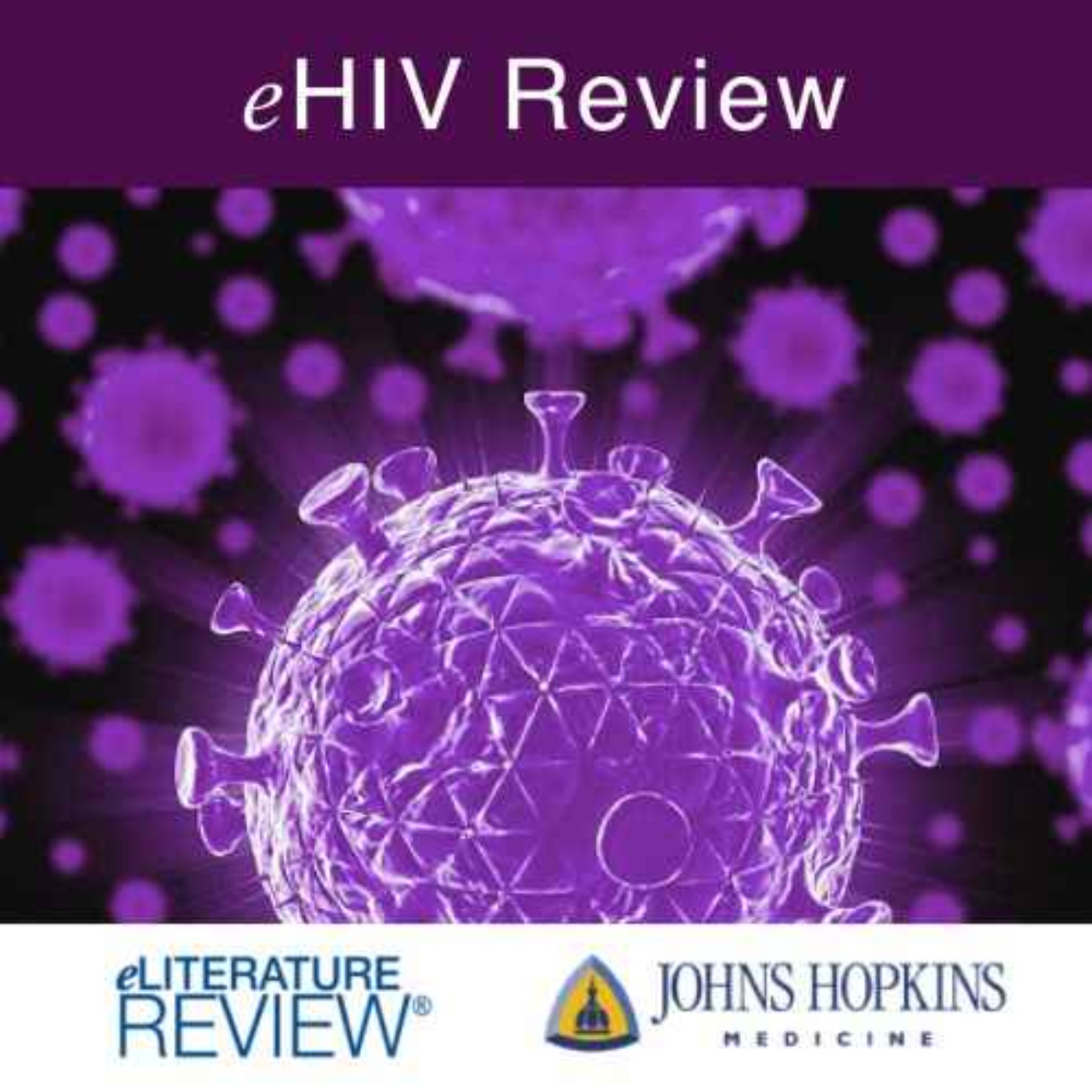 DKBmed RadioWeight Gain in PLWH: A Clinical ConcernMost people living with HIV gain weight when initiating ART. For some, the weight gain signifies a “return to health”; for others, the additional weight can be clinically significant and may be strongly associated with an increased risk of metabolic abnormalities. What causes this weight gain? How can patients most at risk for weight-related comorbidities be identified? Join us as we discuss these and other issues with Dr. Todd Brown, Professor of Medicine and Epidemiology at Johns Hopkins University, in this eHIV Review podcast. Take our post-test to claim CME credits.To read a co...2022-09-0727 min
DKBmed RadioWeight Gain in PLWH: A Clinical ConcernMost people living with HIV gain weight when initiating ART. For some, the weight gain signifies a “return to health”; for others, the additional weight can be clinically significant and may be strongly associated with an increased risk of metabolic abnormalities. What causes this weight gain? How can patients most at risk for weight-related comorbidities be identified? Join us as we discuss these and other issues with Dr. Todd Brown, Professor of Medicine and Epidemiology at Johns Hopkins University, in this eHIV Review podcast. Take our post-test to claim CME credits.To read a co...2022-09-0727 min eHIV ReviewWeight Gain in PLWH: A Clinical ConcernMost people living with HIV gain weight when initiating ART. For some, the weight gain signifies a “return to health”; for others, the additional weight can be clinically significant and may be strongly associated with an increased risk of metabolic abnormalities. What causes this weight gain? How can patients most at risk for weight-related comorbidities be identified? Join us as we discuss these and other issues with Dr. Todd Brown, Professor of Medicine and Epidemiology at Johns Hopkins University, in this eHIV Review podcast. Take our post-test to claim CME credits.To read a co...2022-09-0727 min
eHIV ReviewWeight Gain in PLWH: A Clinical ConcernMost people living with HIV gain weight when initiating ART. For some, the weight gain signifies a “return to health”; for others, the additional weight can be clinically significant and may be strongly associated with an increased risk of metabolic abnormalities. What causes this weight gain? How can patients most at risk for weight-related comorbidities be identified? Join us as we discuss these and other issues with Dr. Todd Brown, Professor of Medicine and Epidemiology at Johns Hopkins University, in this eHIV Review podcast. Take our post-test to claim CME credits.To read a co...2022-09-0727 min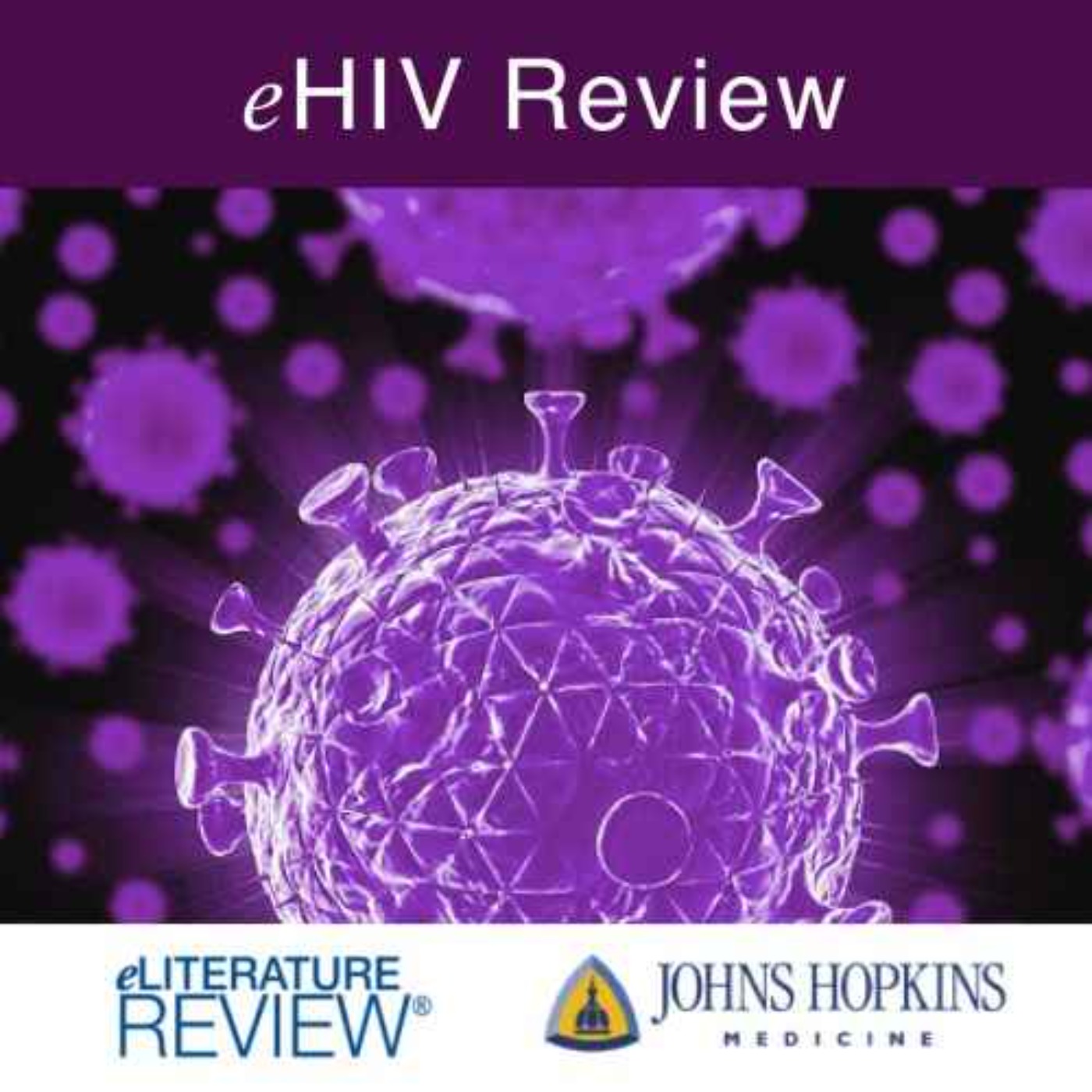 DKBmed RadioCOVID-19: The Morbidity/Mortality RiskAre PLWH at higher risk for increased mortality from COVID-19 infection? How important is it for PWLH to get vaccinated and boosted? Is breakthrough COVID-19 infection more likely to occur among PLWH? What about “long COVID” (PASC)?Join Clinical Research Nurse Diane Kanjilal, manager of the Infectious Disease Clinical Research Unit at Massachusetts General Hospital, as we discuss these questions in this eHIV Review podcast.Take our post-test to claim CME credits.To read a companion newsletter click here. Hosted on Acast. See acast.com/privacy for more information.2022-07-2022 min
DKBmed RadioCOVID-19: The Morbidity/Mortality RiskAre PLWH at higher risk for increased mortality from COVID-19 infection? How important is it for PWLH to get vaccinated and boosted? Is breakthrough COVID-19 infection more likely to occur among PLWH? What about “long COVID” (PASC)?Join Clinical Research Nurse Diane Kanjilal, manager of the Infectious Disease Clinical Research Unit at Massachusetts General Hospital, as we discuss these questions in this eHIV Review podcast.Take our post-test to claim CME credits.To read a companion newsletter click here. Hosted on Acast. See acast.com/privacy for more information.2022-07-2022 min eHIV ReviewCOVID-19: The Morbidity/Mortality RiskAre PLWH at higher risk for increased mortality from COVID-19 infection? How important is it for PWLH to get vaccinated and boosted? Is breakthrough COVID-19 infection more likely to occur among PLWH? What about “long COVID” (PASC)?Join Clinical Research Nurse Diane Kanjilal, manager of the Infectious Disease Clinical Research Unit at Massachusetts General Hospital, as we discuss these questions in this eHIV Review podcast.Take our post-test to claim CME credits.To read a companion newsletter click here. Hosted on Acast. See acast.com/privacy for more information.2022-05-2622 min
eHIV ReviewCOVID-19: The Morbidity/Mortality RiskAre PLWH at higher risk for increased mortality from COVID-19 infection? How important is it for PWLH to get vaccinated and boosted? Is breakthrough COVID-19 infection more likely to occur among PLWH? What about “long COVID” (PASC)?Join Clinical Research Nurse Diane Kanjilal, manager of the Infectious Disease Clinical Research Unit at Massachusetts General Hospital, as we discuss these questions in this eHIV Review podcast.Take our post-test to claim CME credits.To read a companion newsletter click here. Hosted on Acast. See acast.com/privacy for more information.2022-05-2622 min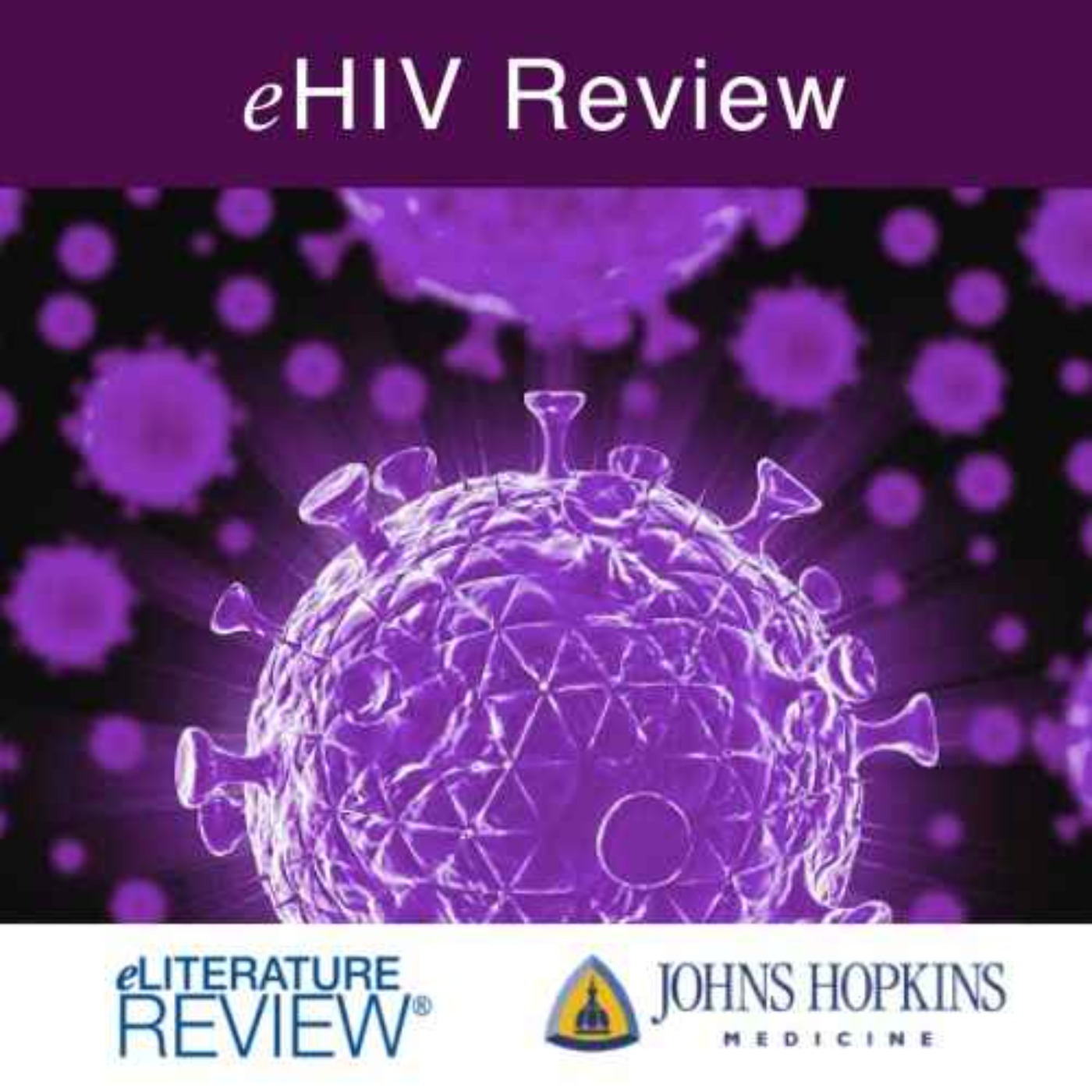 DKBmed RadioClinical Uses of LA Injectable ARTLong-acting injectable antiretroviral therapy is expected to improve adherence, reduce patient burden, and lower community viral load. But for which patients is it suitable? Can it be used as pre-exposure prophylaxis? How does the promise of long-acting ART actually mean in practice?Join us for this eHIV Review podcast, as Dr. Tanyaporn Wansom, Senior Infectious Diseases Consultant at Chayun Consulting in Bangkok Thailand, takes us to the clinic to answer some of these key questionsTake our post-test to claim CME credits.To read a companion newsletter click here. Hosted on...2022-04-1425 min
DKBmed RadioClinical Uses of LA Injectable ARTLong-acting injectable antiretroviral therapy is expected to improve adherence, reduce patient burden, and lower community viral load. But for which patients is it suitable? Can it be used as pre-exposure prophylaxis? How does the promise of long-acting ART actually mean in practice?Join us for this eHIV Review podcast, as Dr. Tanyaporn Wansom, Senior Infectious Diseases Consultant at Chayun Consulting in Bangkok Thailand, takes us to the clinic to answer some of these key questionsTake our post-test to claim CME credits.To read a companion newsletter click here. Hosted on...2022-04-1425 min eHIV ReviewClinical Uses of LA Injectable ARTLong-acting injectable antiretroviral therapy is expected to improve adherence, reduce patient burden, and lower community viral load. But for which patients is it suitable? Can it be used as pre-exposure prophylaxis? How does the promise of long-acting ART actually mean in practice?Join us for this eHIV Review podcast, as Dr. Tanyaporn Wansom, Senior Infectious Diseases Consultant at Chayun Consulting in Bangkok Thailand, takes us to the clinic to answer some of these key questionsTake our post-test to claim CME credits.To read a companion newsletter click here. Hos...2022-04-0725 min
eHIV ReviewClinical Uses of LA Injectable ARTLong-acting injectable antiretroviral therapy is expected to improve adherence, reduce patient burden, and lower community viral load. But for which patients is it suitable? Can it be used as pre-exposure prophylaxis? How does the promise of long-acting ART actually mean in practice?Join us for this eHIV Review podcast, as Dr. Tanyaporn Wansom, Senior Infectious Diseases Consultant at Chayun Consulting in Bangkok Thailand, takes us to the clinic to answer some of these key questionsTake our post-test to claim CME credits.To read a companion newsletter click here. Hos...2022-04-0725 min eHIV ReviewAdolescents & Young Adults: Engaging the Vulnerable 20%Twenty percent of new HIV diagnoses occur among adolescents and young adults. They’re a population underserved by HIV prevention resources, with lower retention in HIV care. Their awareness and uptake of PrEP has been and remains low. What can their clinicians do to more effectively help these vulnerable young people? Join Dr. Luis Rubio from University of California San Francisco as we explore these and other important issues in this eHIV Review podcast. Take our post-test to claim CME credits.To read a companion newsletter click here. Hosted on Acast...2022-03-2219 min
eHIV ReviewAdolescents & Young Adults: Engaging the Vulnerable 20%Twenty percent of new HIV diagnoses occur among adolescents and young adults. They’re a population underserved by HIV prevention resources, with lower retention in HIV care. Their awareness and uptake of PrEP has been and remains low. What can their clinicians do to more effectively help these vulnerable young people? Join Dr. Luis Rubio from University of California San Francisco as we explore these and other important issues in this eHIV Review podcast. Take our post-test to claim CME credits.To read a companion newsletter click here. Hosted on Acast...2022-03-2219 min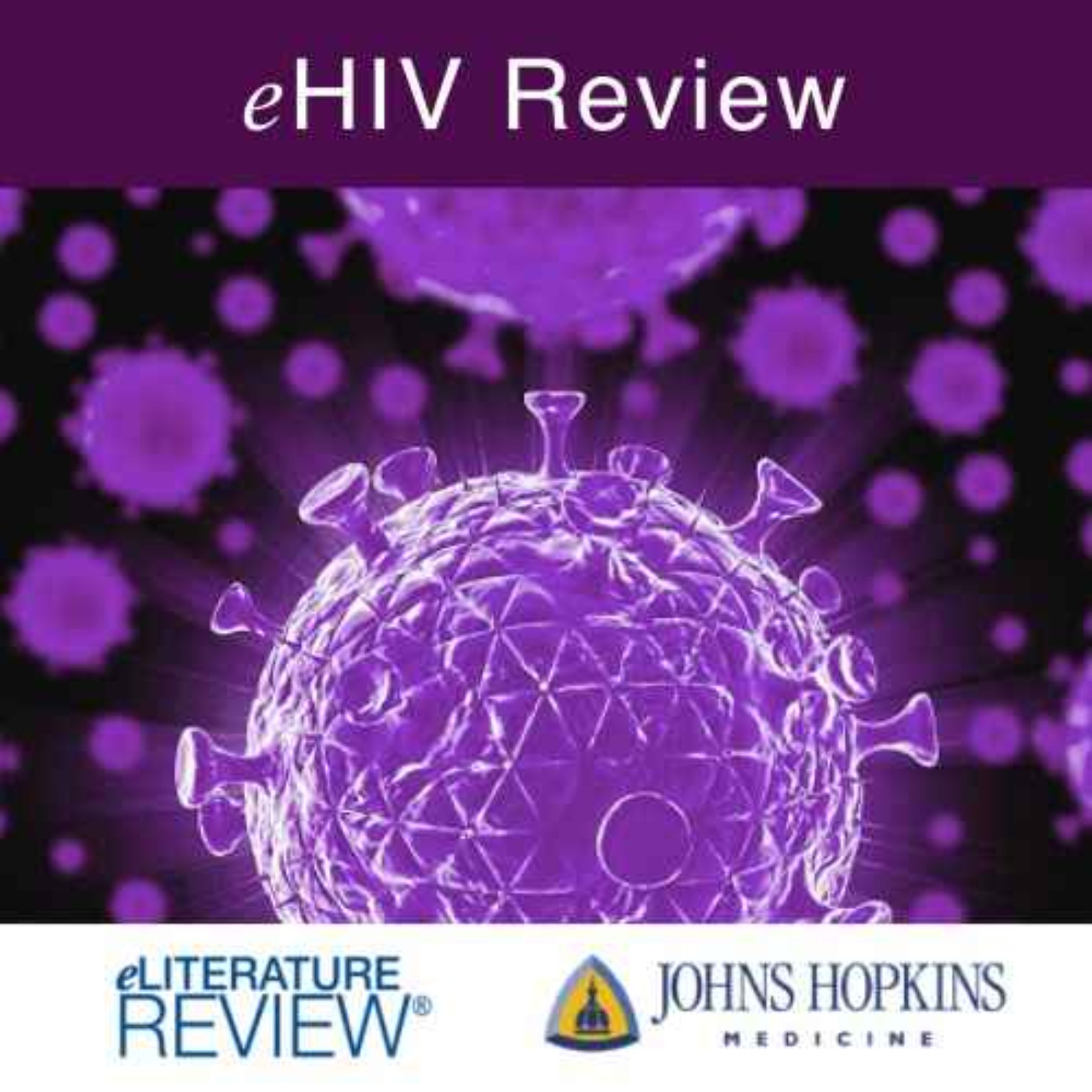 DKBmed RadioAdolescents & Young Adults: Engaging the Vulnerable 20%Twenty percent of new HIV diagnoses occur among adolescents and young adults. They’re a population underserved by HIV prevention resources, with lower retention in HIV care. Their awareness and uptake of PrEP has been and remains low. What can their clinicians do to more effectively help these vulnerable young people? Join Dr. Luis Rubio from University of California San Francisco as we explore these and other important issues in this eHIV Review podcast. Take our post-test to claim CME credits.To read a companion newsletter click here. Hosted on Acast. See...2022-03-2219 min
DKBmed RadioAdolescents & Young Adults: Engaging the Vulnerable 20%Twenty percent of new HIV diagnoses occur among adolescents and young adults. They’re a population underserved by HIV prevention resources, with lower retention in HIV care. Their awareness and uptake of PrEP has been and remains low. What can their clinicians do to more effectively help these vulnerable young people? Join Dr. Luis Rubio from University of California San Francisco as we explore these and other important issues in this eHIV Review podcast. Take our post-test to claim CME credits.To read a companion newsletter click here. Hosted on Acast. See...2022-03-2219 min eHIV ReviewRapid ART: Benefits and Clinical ConsiderationsRapid ART — initiating ART as soon as possible after an HIV diagnosis: How effective is it at bringing people with newly diagnosed HIV into lasting care? When and how should it be initiated? Are there particular populations where attempting rapid ART should be avoided? Join us as we discuss these issues with Dr. Jonathan Colasanti from Atlanta’s Emory University and Grady Health System, in this eHIV Review podcast. Take our post-test to claim CME credits.To read a companion newsletter click here. Hosted on Acast. See acast.com/privacy for...2022-03-0824 min
eHIV ReviewRapid ART: Benefits and Clinical ConsiderationsRapid ART — initiating ART as soon as possible after an HIV diagnosis: How effective is it at bringing people with newly diagnosed HIV into lasting care? When and how should it be initiated? Are there particular populations where attempting rapid ART should be avoided? Join us as we discuss these issues with Dr. Jonathan Colasanti from Atlanta’s Emory University and Grady Health System, in this eHIV Review podcast. Take our post-test to claim CME credits.To read a companion newsletter click here. Hosted on Acast. See acast.com/privacy for...2022-03-0824 min eHIV ReviewEngaging Undocumented Latinx People In HIV CareUndocumented LatinX immigrants are a special population facing many difficulties that hinder their engagement in HIV care and prevention. One obvious barrier is language: many undocumented immigrants do not understand either spoken or written English. Many may have never received routine medical care before and can be baffled by the complexities of the medical system. Insurance status and financial concerns are additional barriers. Finally, HIV-related stigma and fear of disclosure of their HIV and/or immigration status can prevent undocumented Latinx immigrants from engaging in HIV care and prevention. How can clinicians most effectively help these individuals receive proper...2022-03-0823 min
eHIV ReviewEngaging Undocumented Latinx People In HIV CareUndocumented LatinX immigrants are a special population facing many difficulties that hinder their engagement in HIV care and prevention. One obvious barrier is language: many undocumented immigrants do not understand either spoken or written English. Many may have never received routine medical care before and can be baffled by the complexities of the medical system. Insurance status and financial concerns are additional barriers. Finally, HIV-related stigma and fear of disclosure of their HIV and/or immigration status can prevent undocumented Latinx immigrants from engaging in HIV care and prevention. How can clinicians most effectively help these individuals receive proper...2022-03-0823 min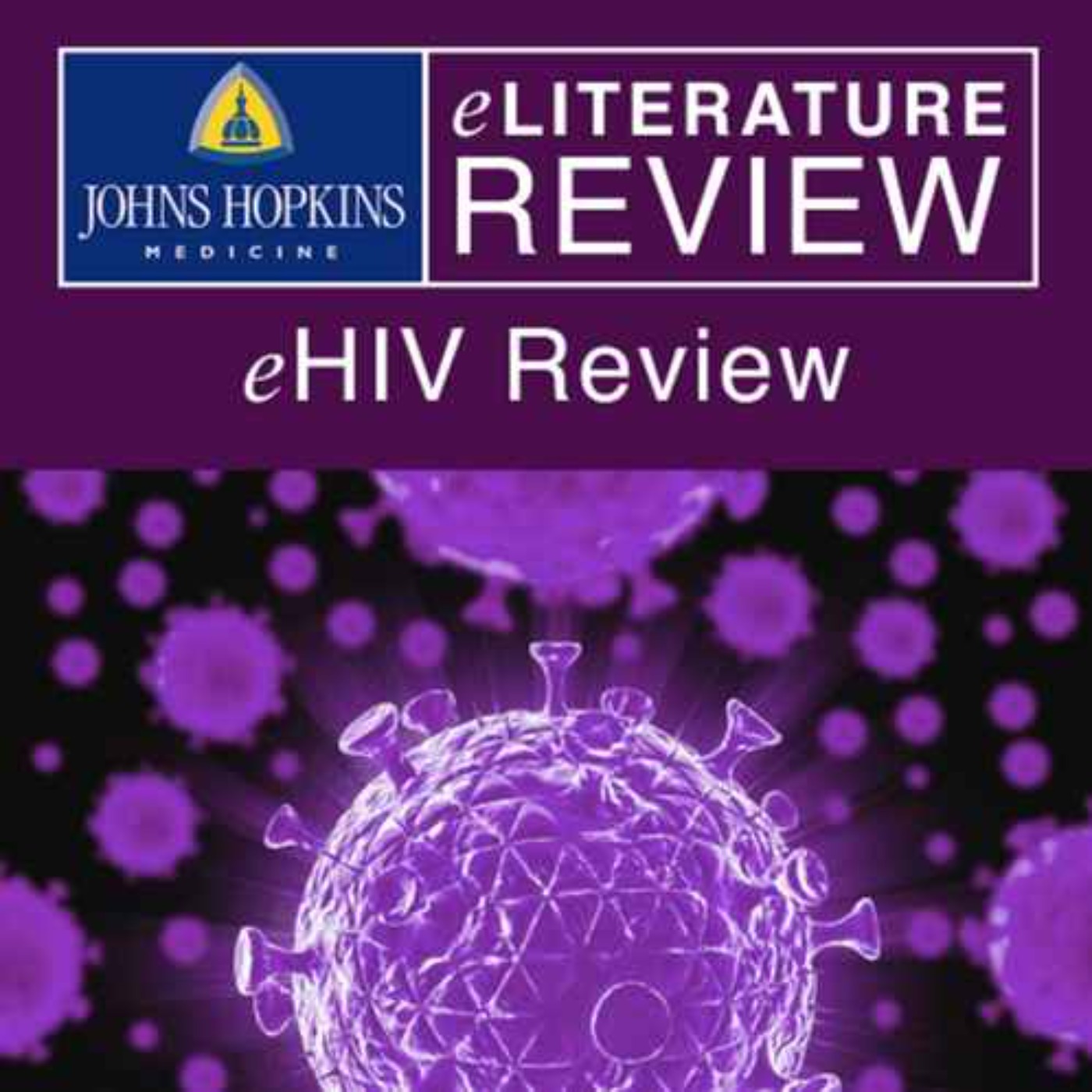 DKBmed Radio“Good Nurse/Bad Nurse” Meets eHIV ReviewPlease note, this podcast is not accredited and does not provide continuing education credit. Clinical Nurse Educator and eHIV Review Program Director Justin Alves joins RN Tina Vinsant on her popular “Good Nurse/Bad Nurse” podcast to tell the story of HIV hero nurse Mary Magee. Hosted on Acast. See acast.com/privacy for more information.2021-11-0119 min
DKBmed Radio“Good Nurse/Bad Nurse” Meets eHIV ReviewPlease note, this podcast is not accredited and does not provide continuing education credit. Clinical Nurse Educator and eHIV Review Program Director Justin Alves joins RN Tina Vinsant on her popular “Good Nurse/Bad Nurse” podcast to tell the story of HIV hero nurse Mary Magee. Hosted on Acast. See acast.com/privacy for more information.2021-11-0119 min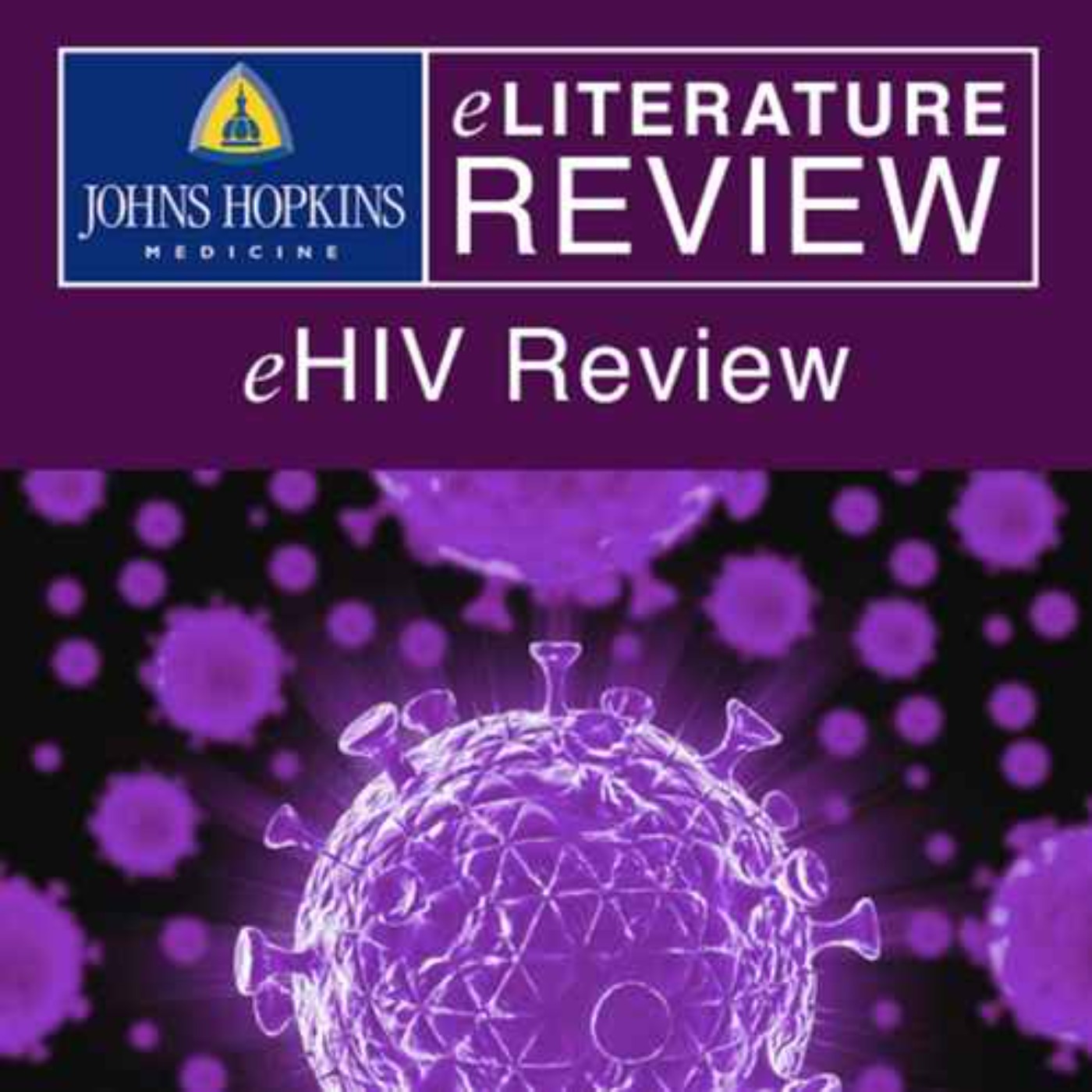 eHIV ReviewCritical Factors When Switching ARTBetter tolerability. More convenient dosing. Less serious side effects. Fewer potential drug-drug interactions. These are some of the most common reasons why individuals living with HIV want or need to change their currently successful ART regimens. But what do clinicians need to consider when determining which ART to switch to? What role do the patient’s comorbidities play in the selection process? How do changes in the patient’s condition not related to HIV affect the safety and efficacy of their current regimen? What does the evidence say? Join us in this eHIV Review podc...2021-07-2118 min
eHIV ReviewCritical Factors When Switching ARTBetter tolerability. More convenient dosing. Less serious side effects. Fewer potential drug-drug interactions. These are some of the most common reasons why individuals living with HIV want or need to change their currently successful ART regimens. But what do clinicians need to consider when determining which ART to switch to? What role do the patient’s comorbidities play in the selection process? How do changes in the patient’s condition not related to HIV affect the safety and efficacy of their current regimen? What does the evidence say? Join us in this eHIV Review podc...2021-07-2118 min eHIV ReviewWeight Gain and Hormone TherapyDo antivirals increase weight gain? Does PrEP reduce the effect of gender-affirming hormone therapy in transgender women? Join us in the clinic with Dr. Sarah Puryear from the University of California San Francisco as we discuss these important questions. Take our post-test to claim CME credits. Hosted on Acast. See acast.com/privacy for more information.2021-05-2718 min
eHIV ReviewWeight Gain and Hormone TherapyDo antivirals increase weight gain? Does PrEP reduce the effect of gender-affirming hormone therapy in transgender women? Join us in the clinic with Dr. Sarah Puryear from the University of California San Francisco as we discuss these important questions. Take our post-test to claim CME credits. Hosted on Acast. See acast.com/privacy for more information.2021-05-2718 min eHIV ReviewIdentifying HIV Infection in the EDHow can the emergency department become more effective in identifying acute HIV infection? What are the missed opportunities for screening? How can existing protocols be adapted to identify more patients with HIV infection without compromising clinicians’ ability to provide emergent care? Those are some of the questions we’re here to discuss today, with Dr. Douglas White and Dr. Erik Anderson from Highland Hospital’s Department of Emergency Medicine, part of the Alameda Health System in Oakland, California Hosted on Acast. See acast.com/privacy for more information.2021-05-0621 min
eHIV ReviewIdentifying HIV Infection in the EDHow can the emergency department become more effective in identifying acute HIV infection? What are the missed opportunities for screening? How can existing protocols be adapted to identify more patients with HIV infection without compromising clinicians’ ability to provide emergent care? Those are some of the questions we’re here to discuss today, with Dr. Douglas White and Dr. Erik Anderson from Highland Hospital’s Department of Emergency Medicine, part of the Alameda Health System in Oakland, California Hosted on Acast. See acast.com/privacy for more information.2021-05-0621 min eHIV ReviewScreening Strategies to Prevent HIV in MSM and Transgender WomenNearly two of three new HIV infections in the United States appear in transgender women and men who have sex with men (MSM), with most transmission coming from people unaware of their infection. What should clinicians do to increase the rate of HIV screening in these populations to meet guideline recommendations? In this eHIV Review podcast, Dr. Robert Goldstein from Harvard Medical School and Massachusetts General Hospital takes us to the clinic to explain how HIV risk in these special populations can be identified and infection prevented. Take our post-test to claim CME credits. Hoste...2021-01-2814 min
eHIV ReviewScreening Strategies to Prevent HIV in MSM and Transgender WomenNearly two of three new HIV infections in the United States appear in transgender women and men who have sex with men (MSM), with most transmission coming from people unaware of their infection. What should clinicians do to increase the rate of HIV screening in these populations to meet guideline recommendations? In this eHIV Review podcast, Dr. Robert Goldstein from Harvard Medical School and Massachusetts General Hospital takes us to the clinic to explain how HIV risk in these special populations can be identified and infection prevented. Take our post-test to claim CME credits. Hoste...2021-01-2814 min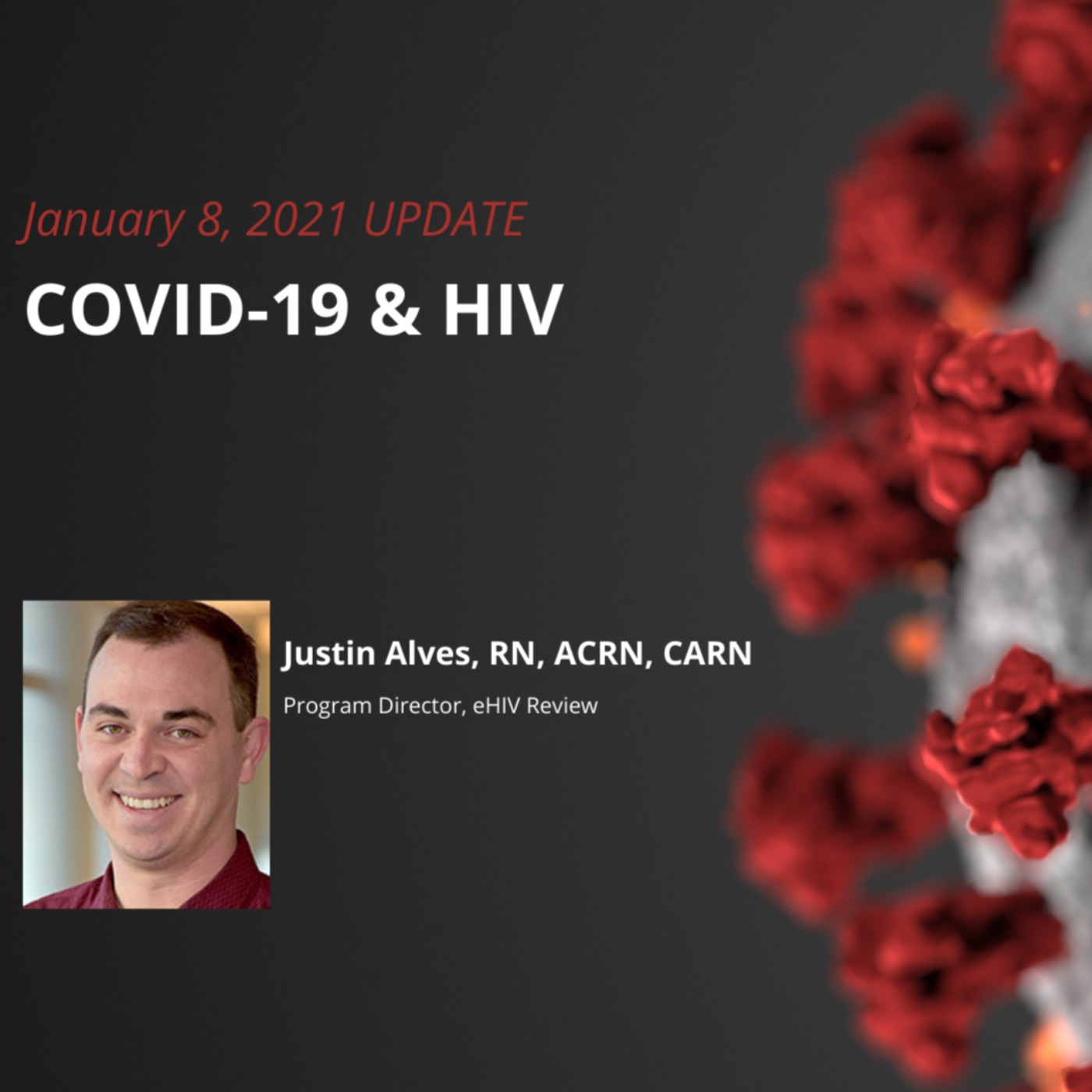 DKBmed RadioUPDATE 1/8/2021 - COVID-19 & HIV Justin Alves, RN, ACRN, CARN discusses the impact of the COVID-19 pandemic on people living with HIV (PLWH). Topics: *Similarities in risk factors between HIV & COVID-19 *How to care for PLWH during COVID-19 pandemic *Which HIV patients are most at-risk for COVID-19 *Increasing screening intervals during the pandemic Post-test for CME/CE credit: https://covid19.dkbmed.com/#eval-test-1-8Access our resource center, download webinar slides, and claim credit at https://covid19.dkbmed.com/ Presenting faculty: Justin Alves, RN, ACRN, CARN - eHIV Review, Program Director Hosted on Acast. See acast.c...2021-01-0811 min
DKBmed RadioUPDATE 1/8/2021 - COVID-19 & HIV Justin Alves, RN, ACRN, CARN discusses the impact of the COVID-19 pandemic on people living with HIV (PLWH). Topics: *Similarities in risk factors between HIV & COVID-19 *How to care for PLWH during COVID-19 pandemic *Which HIV patients are most at-risk for COVID-19 *Increasing screening intervals during the pandemic Post-test for CME/CE credit: https://covid19.dkbmed.com/#eval-test-1-8Access our resource center, download webinar slides, and claim credit at https://covid19.dkbmed.com/ Presenting faculty: Justin Alves, RN, ACRN, CARN - eHIV Review, Program Director Hosted on Acast. See acast.c...2021-01-0811 min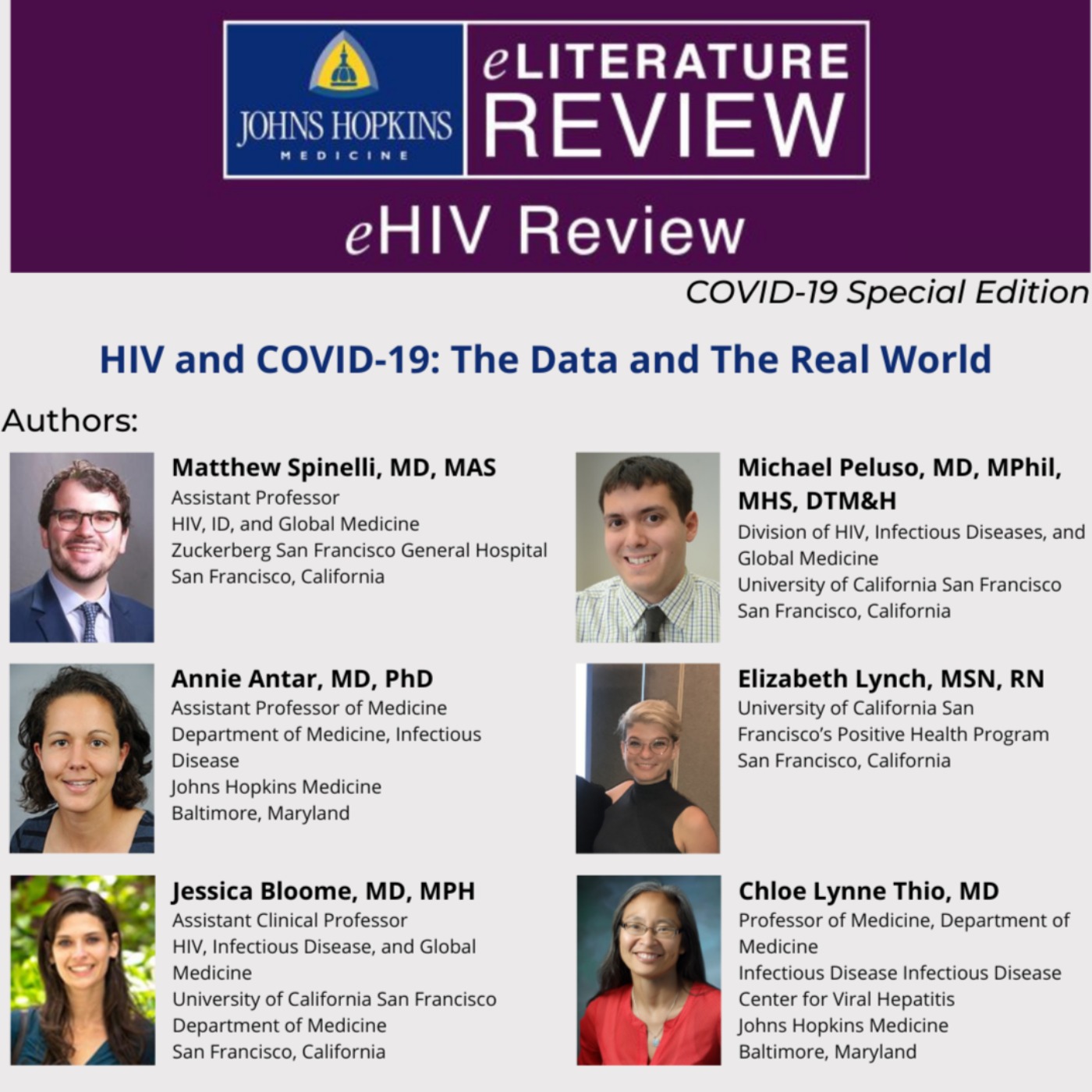 eHIV ReviewHIV and COVID-19: The Data and The Real WorldWhat do the currently published findings say about the effects of the COVID pandemic on people living with HIV? How is the pandemic affecting patients and clinicians in HIV care delivery and the health of people living with HIV?That’s the dual focus of this eHIV Review Special Edition issue. Matthew Spinelli, MD, MAS, assistant professor in the Division of HIV, ID, and Global Medicine at the University of California, San Francisco and San Francisco General Hospital, analyzes the current literature that addresses these questions, and then speaks directly with front-line clinicians about what they’re experiencing...2020-12-1738 min
eHIV ReviewHIV and COVID-19: The Data and The Real WorldWhat do the currently published findings say about the effects of the COVID pandemic on people living with HIV? How is the pandemic affecting patients and clinicians in HIV care delivery and the health of people living with HIV?That’s the dual focus of this eHIV Review Special Edition issue. Matthew Spinelli, MD, MAS, assistant professor in the Division of HIV, ID, and Global Medicine at the University of California, San Francisco and San Francisco General Hospital, analyzes the current literature that addresses these questions, and then speaks directly with front-line clinicians about what they’re experiencing...2020-12-1738 min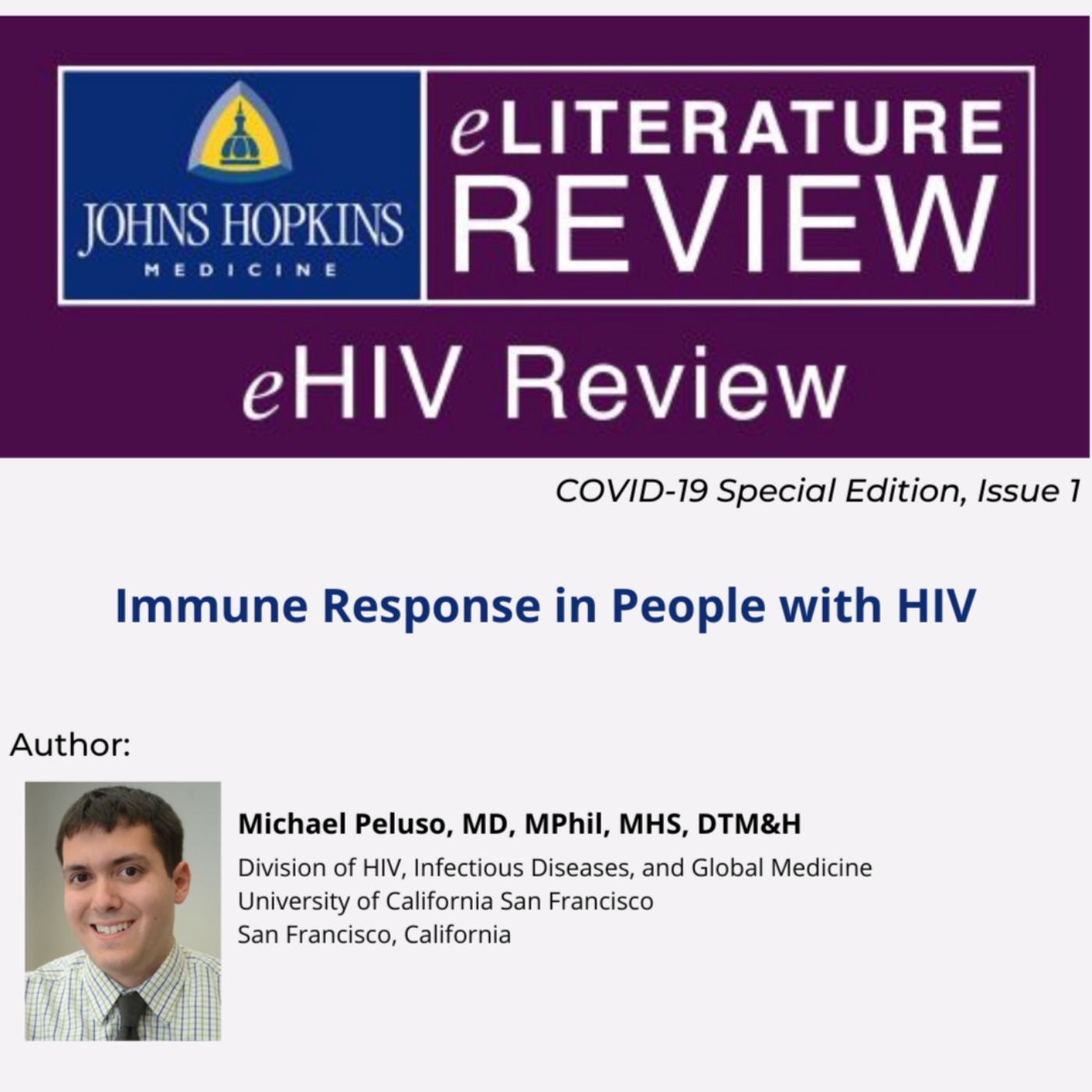 eHIV ReviewImmune Response in People with HIVWhat do the currently published findings say about the effects of the COVID pandemic on people living with HIV? How is the pandemic affecting patients and clinicians in HIV care delivery and the health of people living with HIV?That’s the dual focus of this eHIV Review Special Edition issue. Matthew Spinelli, MD, MAS, assistant professor in the Division of HIV, ID, and Global Medicine at the University of California, San Francisco and San Francisco General Hospital, analyzes the current literature that addresses these questions, and then speaks directly with front-line clinicians about what they’re experiencing...2020-12-0106 min
eHIV ReviewImmune Response in People with HIVWhat do the currently published findings say about the effects of the COVID pandemic on people living with HIV? How is the pandemic affecting patients and clinicians in HIV care delivery and the health of people living with HIV?That’s the dual focus of this eHIV Review Special Edition issue. Matthew Spinelli, MD, MAS, assistant professor in the Division of HIV, ID, and Global Medicine at the University of California, San Francisco and San Francisco General Hospital, analyzes the current literature that addresses these questions, and then speaks directly with front-line clinicians about what they’re experiencing...2020-12-0106 min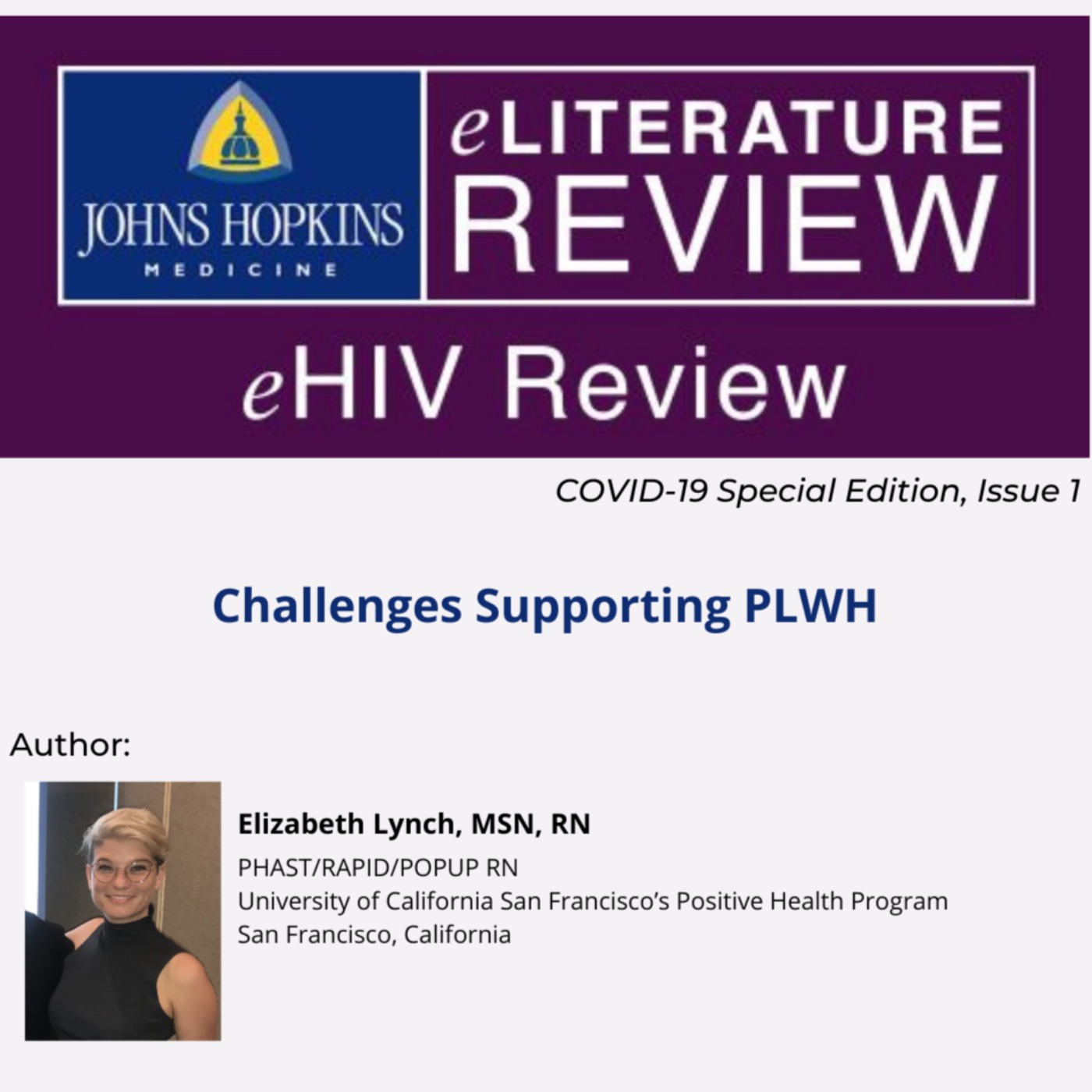 eHIV ReviewChallenges Supporting PLWHWhat do the currently published findings say about the effects of the COVID pandemic on people living with HIV? How is the pandemic affecting patients and clinicians in HIV care delivery and the health of people living with HIV?That’s the dual focus of this eHIV Review Special Edition issue. Matthew Spinelli, MD, MAS, assistant professor in the Division of HIV, ID, and Global Medicine at the University of California, San Francisco and San Francisco General Hospital, analyzes the current literature that addresses these questions, and then speaks directly with front-line clinicians about what they’re experiencing...2020-12-0106 min
eHIV ReviewChallenges Supporting PLWHWhat do the currently published findings say about the effects of the COVID pandemic on people living with HIV? How is the pandemic affecting patients and clinicians in HIV care delivery and the health of people living with HIV?That’s the dual focus of this eHIV Review Special Edition issue. Matthew Spinelli, MD, MAS, assistant professor in the Division of HIV, ID, and Global Medicine at the University of California, San Francisco and San Francisco General Hospital, analyzes the current literature that addresses these questions, and then speaks directly with front-line clinicians about what they’re experiencing...2020-12-0106 min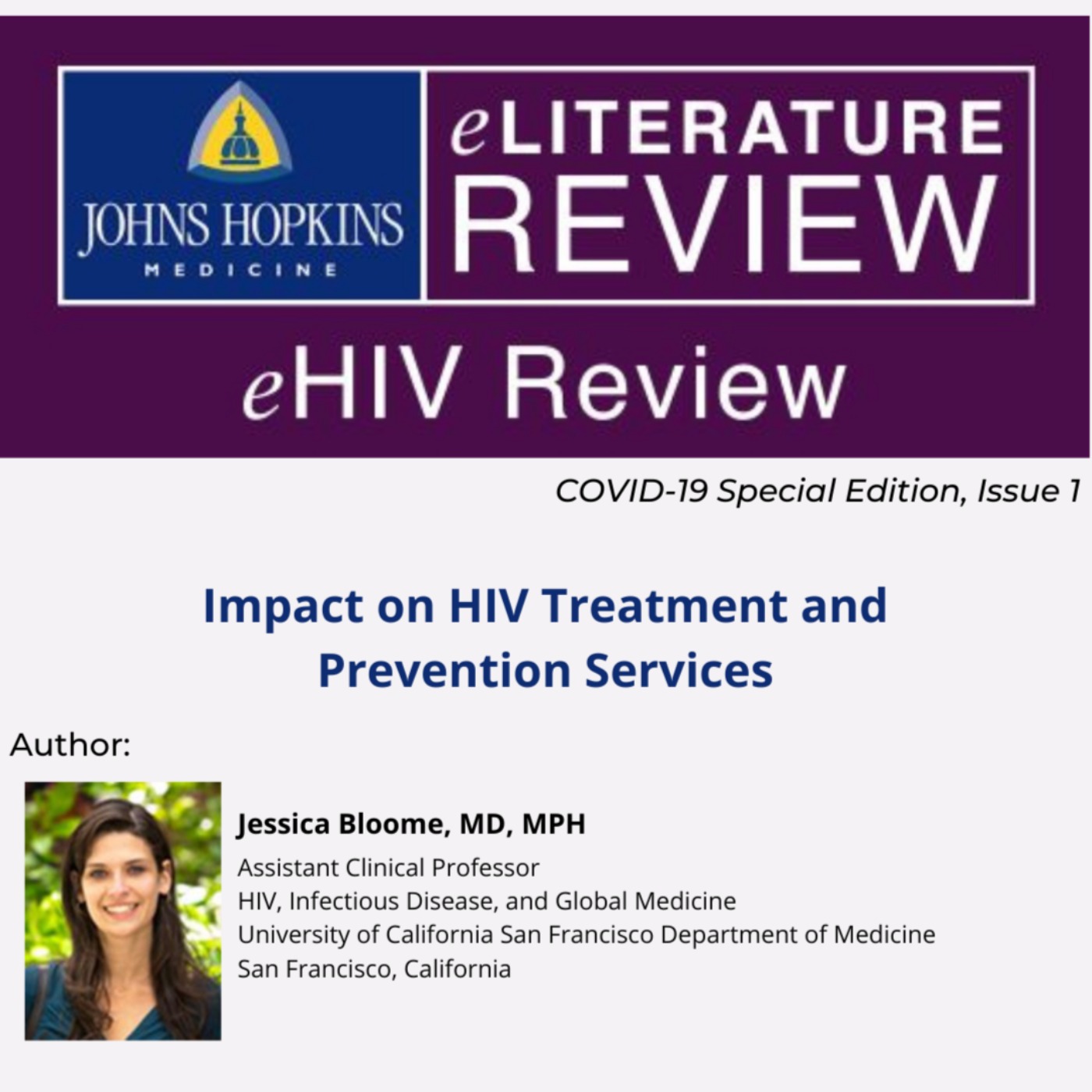 eHIV ReviewImpact on HIV Treatment and Prevention ServicesWhat do the currently published findings say about the effects of the COVID pandemic on people living with HIV? How is the pandemic affecting patients and clinicians in HIV care delivery and the health of people living with HIV?That’s the dual focus of this eHIV Review Special Edition issue. Matthew Spinelli, MD, MAS, assistant professor in the Division of HIV, ID, and Global Medicine at the University of California, San Francisco and San Francisco General Hospital, analyzes the current literature that addresses these questions, and then speaks directly with front-line clinicians about what they’re experiencing...2020-12-0105 min
eHIV ReviewImpact on HIV Treatment and Prevention ServicesWhat do the currently published findings say about the effects of the COVID pandemic on people living with HIV? How is the pandemic affecting patients and clinicians in HIV care delivery and the health of people living with HIV?That’s the dual focus of this eHIV Review Special Edition issue. Matthew Spinelli, MD, MAS, assistant professor in the Division of HIV, ID, and Global Medicine at the University of California, San Francisco and San Francisco General Hospital, analyzes the current literature that addresses these questions, and then speaks directly with front-line clinicians about what they’re experiencing...2020-12-0105 min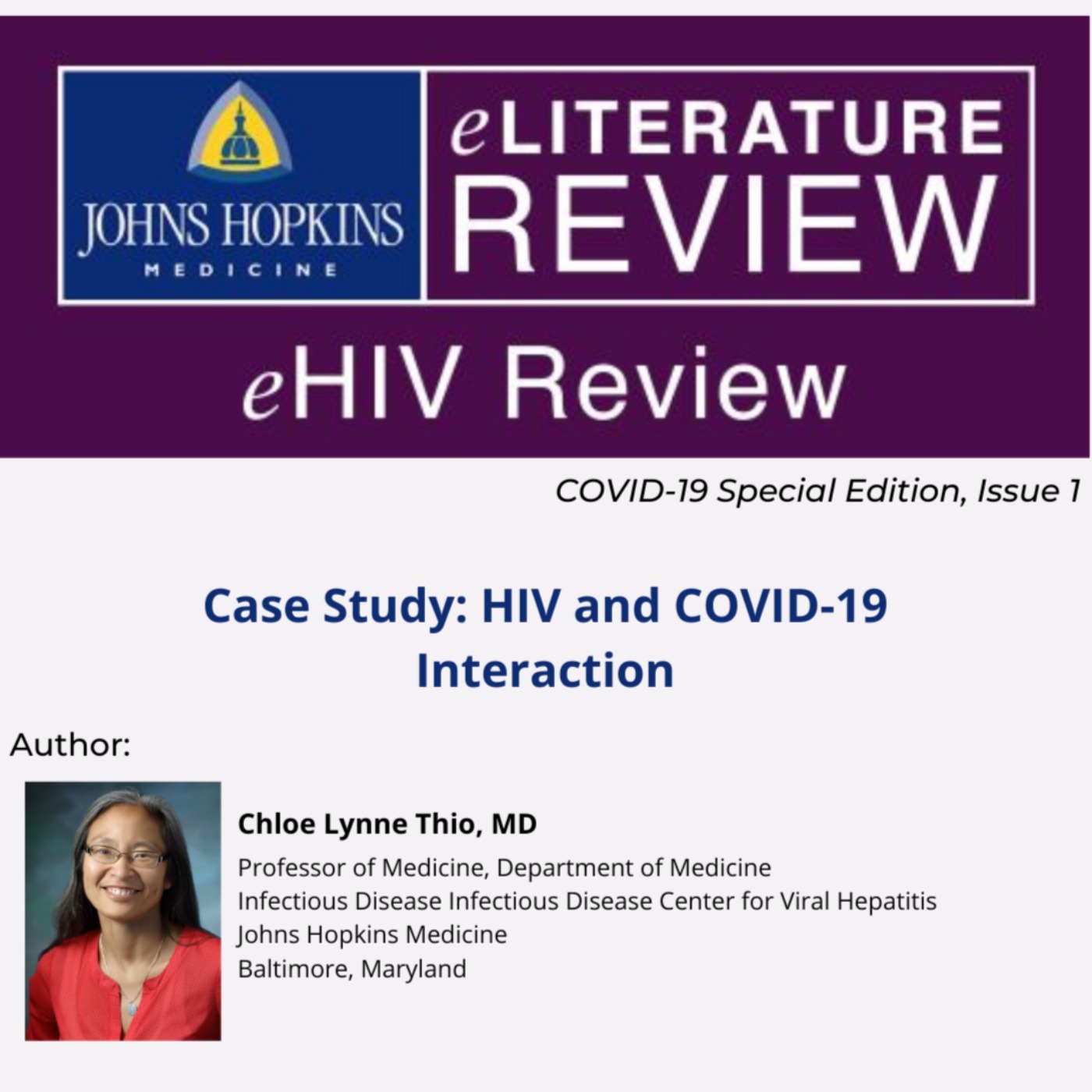 eHIV ReviewCase Study: HIV and COVID-19 InteractionWhat do the currently published findings say about the effects of the COVID pandemic on people living with HIV? How is the pandemic affecting patients and clinicians in HIV care delivery and the health of people living with HIV?That’s the dual focus of this eHIV Review Special Edition issue. Matthew Spinelli, MD, MAS, assistant professor in the Division of HIV, ID, and Global Medicine at the University of California, San Francisco and San Francisco General Hospital, analyzes the current literature that addresses these questions, and then speaks directly with front-line clinicians about what they’re experiencing...2020-12-0105 min
eHIV ReviewCase Study: HIV and COVID-19 InteractionWhat do the currently published findings say about the effects of the COVID pandemic on people living with HIV? How is the pandemic affecting patients and clinicians in HIV care delivery and the health of people living with HIV?That’s the dual focus of this eHIV Review Special Edition issue. Matthew Spinelli, MD, MAS, assistant professor in the Division of HIV, ID, and Global Medicine at the University of California, San Francisco and San Francisco General Hospital, analyzes the current literature that addresses these questions, and then speaks directly with front-line clinicians about what they’re experiencing...2020-12-0105 min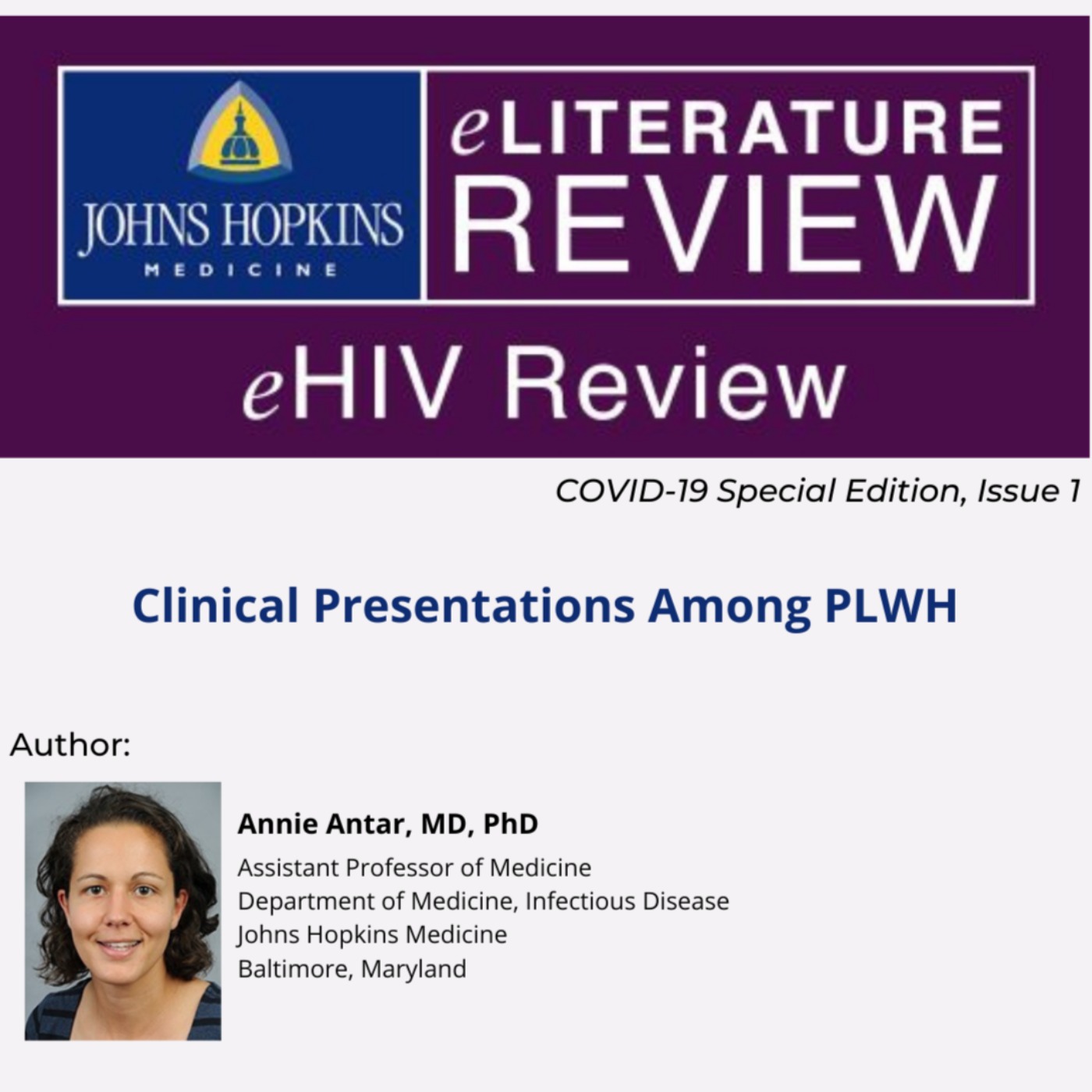 eHIV ReviewClinical Presentations Among PLWHWhat do the currently published findings say about the effects of the COVID pandemic on people living with HIV? How is the pandemic affecting patients and clinicians in HIV care delivery and the health of people living with HIV?That’s the dual focus of this eHIV Review Special Edition issue. Matthew Spinelli, MD, MAS, assistant professor in the Division of HIV, ID, and Global Medicine at the University of California, San Francisco and San Francisco General Hospital, analyzes the current literature that addresses these questions, and then speaks directly with front-line clinicians about what they’re experiencing...2020-12-0105 min
eHIV ReviewClinical Presentations Among PLWHWhat do the currently published findings say about the effects of the COVID pandemic on people living with HIV? How is the pandemic affecting patients and clinicians in HIV care delivery and the health of people living with HIV?That’s the dual focus of this eHIV Review Special Edition issue. Matthew Spinelli, MD, MAS, assistant professor in the Division of HIV, ID, and Global Medicine at the University of California, San Francisco and San Francisco General Hospital, analyzes the current literature that addresses these questions, and then speaks directly with front-line clinicians about what they’re experiencing...2020-12-0105 min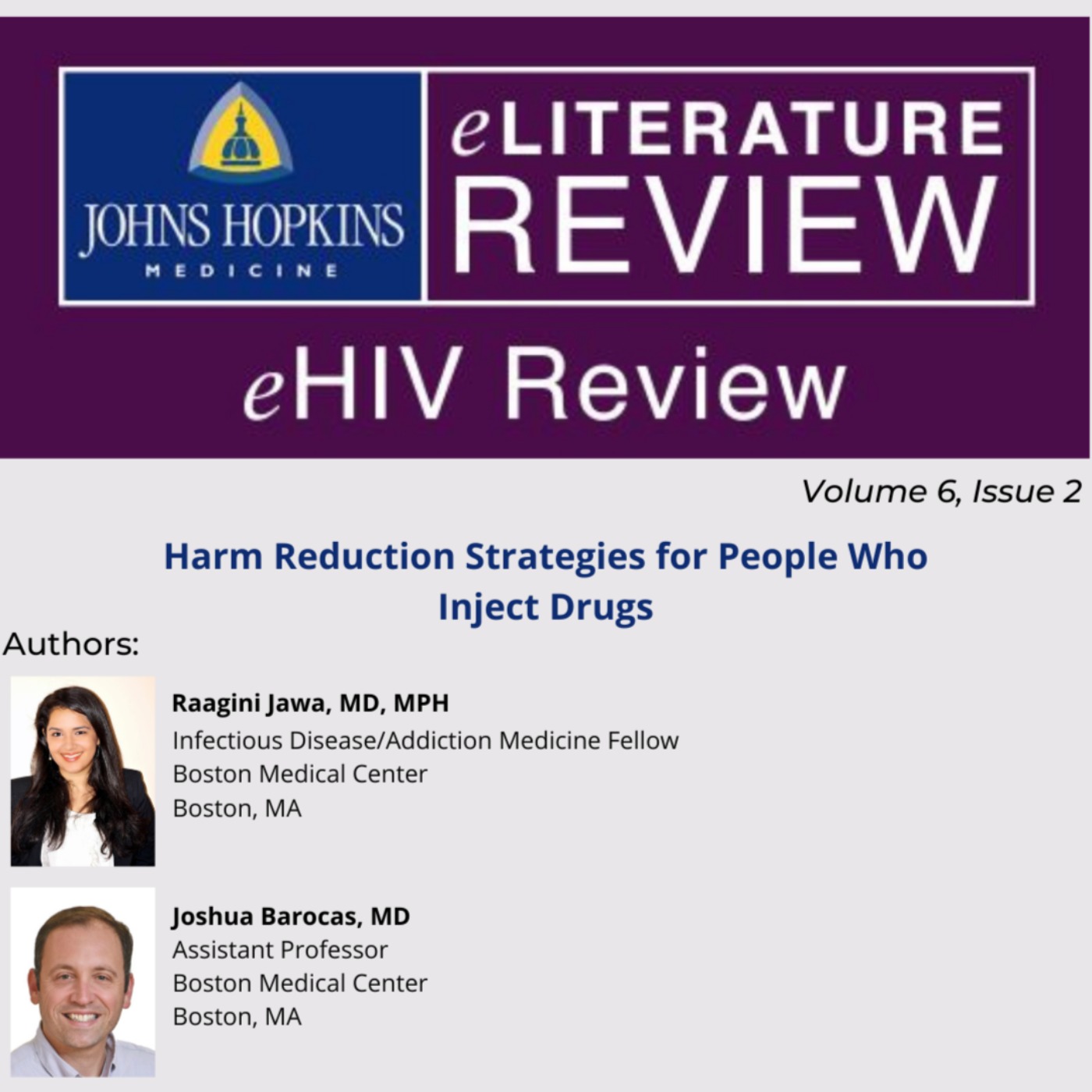 eHIV ReviewHarm Reduction Strategies for People Who Inject DrugsTake our post-test to claim CME credits.To read a companion newsletter click here.Why do PWID — people who inject drugs — continue as an uncontrolled source of HIV infection? Where are the missed opportunities for increased screening in this population? What barriers have been identified and what strategies can successfully overcome them? Which harm reduction initiatives have been proved effective, and can they be cost-effectively replicated? In this eHIV Review podcast, Dr. Josh Barocas from the Boston University School of Medicine and Boston Medical Center, and Dr. Raagini Jawa, an infectious disease and addiction ...2020-11-2019 min
eHIV ReviewHarm Reduction Strategies for People Who Inject DrugsTake our post-test to claim CME credits.To read a companion newsletter click here.Why do PWID — people who inject drugs — continue as an uncontrolled source of HIV infection? Where are the missed opportunities for increased screening in this population? What barriers have been identified and what strategies can successfully overcome them? Which harm reduction initiatives have been proved effective, and can they be cost-effectively replicated? In this eHIV Review podcast, Dr. Josh Barocas from the Boston University School of Medicine and Boston Medical Center, and Dr. Raagini Jawa, an infectious disease and addiction ...2020-11-2019 min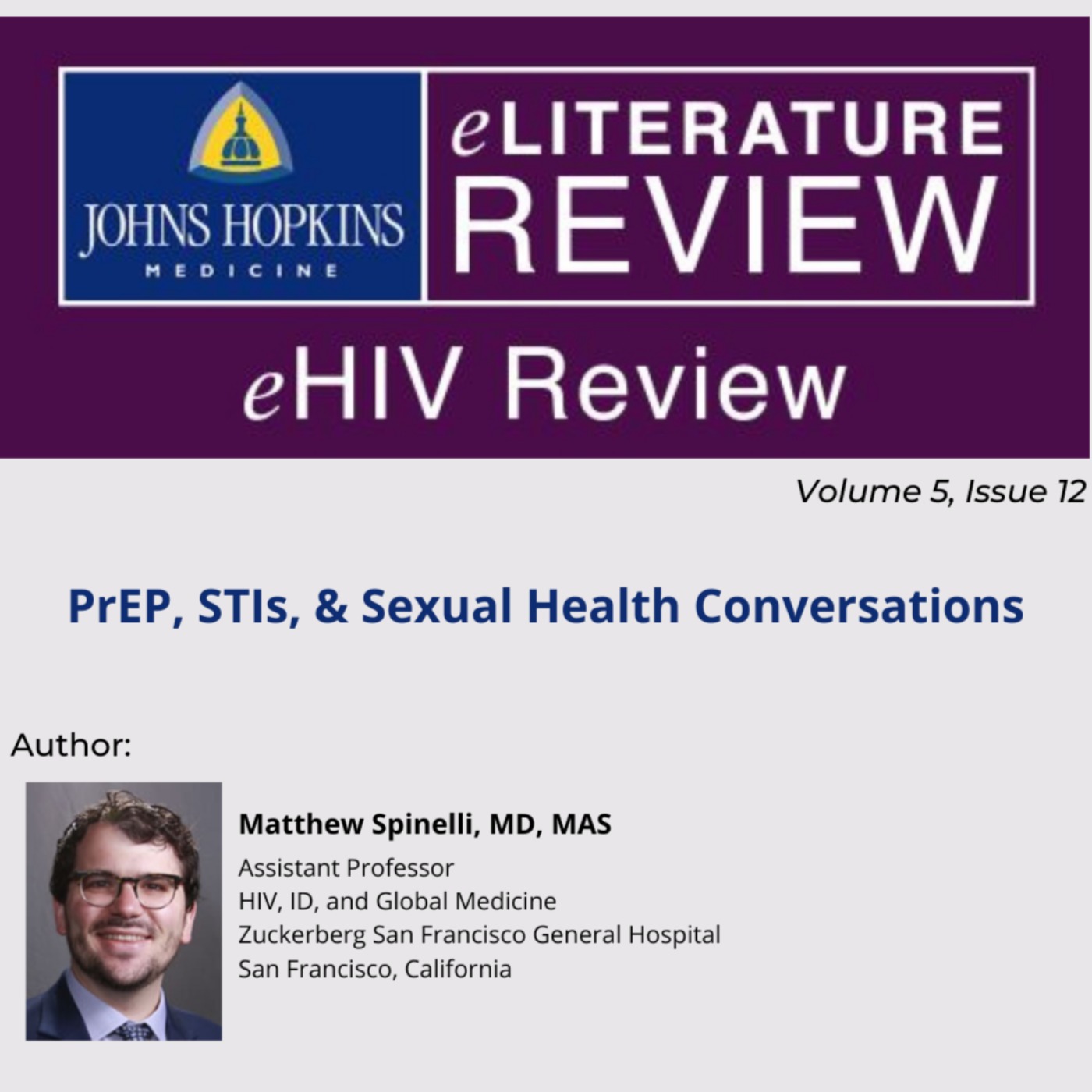 eHIV ReviewPrEP, STIs, & Sexual Health ConversationsTake our post-test to claim CME credits.To read a companion newsletter click here.Both the on-going syphilis and HIV epidemics are highly concentrated among men who have sex with men. While PrEP has been proven to reduce HIV transmission, it is not designed to prevent sexually transmitted infections like gonorrhea, syphilis, and chlamydia. What does the evidence say about reducing STI risk in MSM, and how can it be most effectively applied in practice? In this podcast, Dr. Matthew Spinelli — Assistant Professor in the Division of HIV, ID, and Globa...2020-09-1021 min
eHIV ReviewPrEP, STIs, & Sexual Health ConversationsTake our post-test to claim CME credits.To read a companion newsletter click here.Both the on-going syphilis and HIV epidemics are highly concentrated among men who have sex with men. While PrEP has been proven to reduce HIV transmission, it is not designed to prevent sexually transmitted infections like gonorrhea, syphilis, and chlamydia. What does the evidence say about reducing STI risk in MSM, and how can it be most effectively applied in practice? In this podcast, Dr. Matthew Spinelli — Assistant Professor in the Division of HIV, ID, and Globa...2020-09-1021 min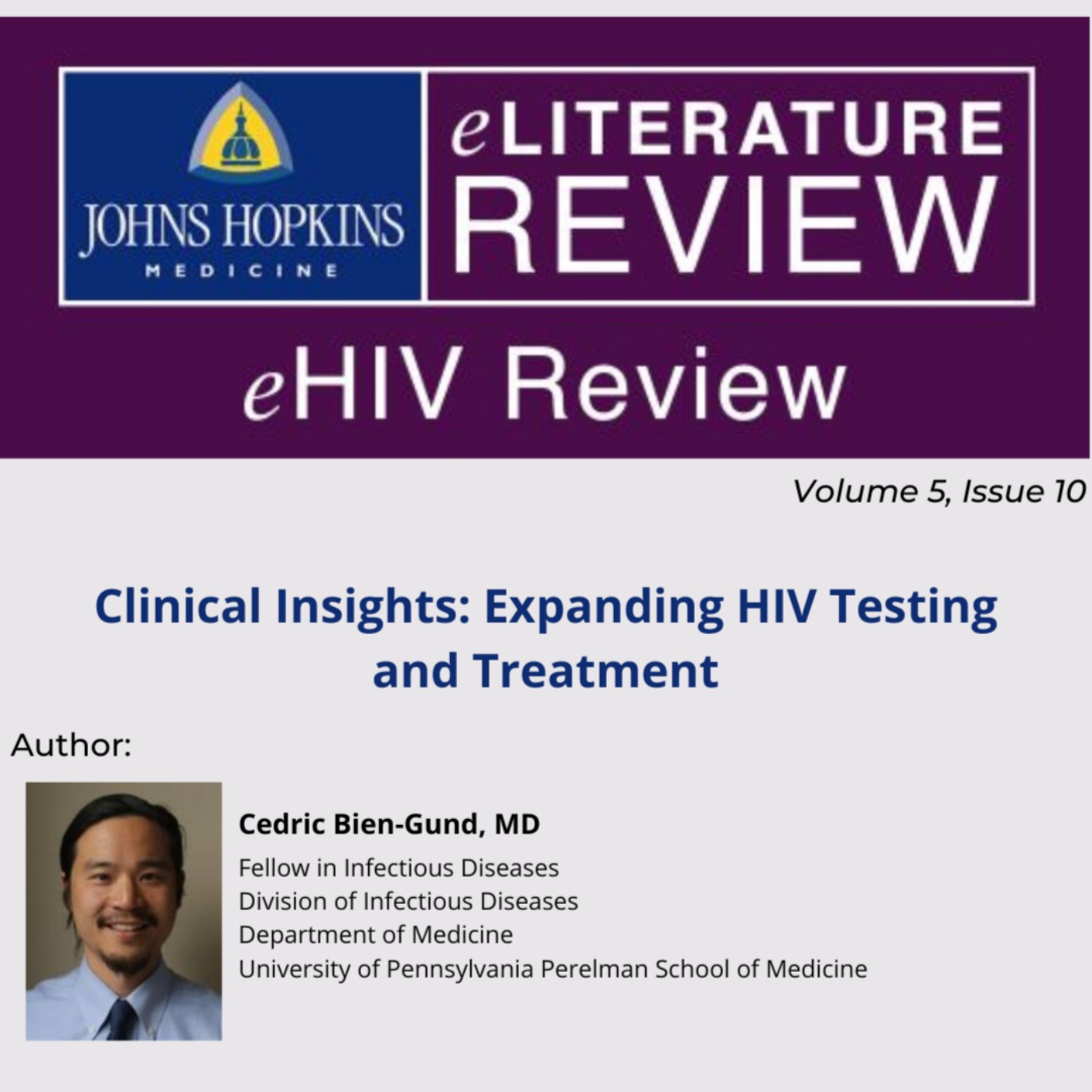 eHIV ReviewClinical Insights: Expanding HIV Testing and TreatmentTake our post-test to claim CME credits. To read a companion newsletter click here.Our ability to reduce HIV infection and transmission depends on testing, in particular assessing the status of at-risk people who continue to remain untested. In this issue, Dr. Cedric Bien-Gund from the Division of Infectious Diseases at the University of Pennsylvania takes us to the clinic to explain the pros and cons of the currently available HIV tests and explains which are best to use in particular clinical circumstances. Hosted on Acast...2020-07-0813 min
eHIV ReviewClinical Insights: Expanding HIV Testing and TreatmentTake our post-test to claim CME credits. To read a companion newsletter click here.Our ability to reduce HIV infection and transmission depends on testing, in particular assessing the status of at-risk people who continue to remain untested. In this issue, Dr. Cedric Bien-Gund from the Division of Infectious Diseases at the University of Pennsylvania takes us to the clinic to explain the pros and cons of the currently available HIV tests and explains which are best to use in particular clinical circumstances. Hosted on Acast...2020-07-0813 min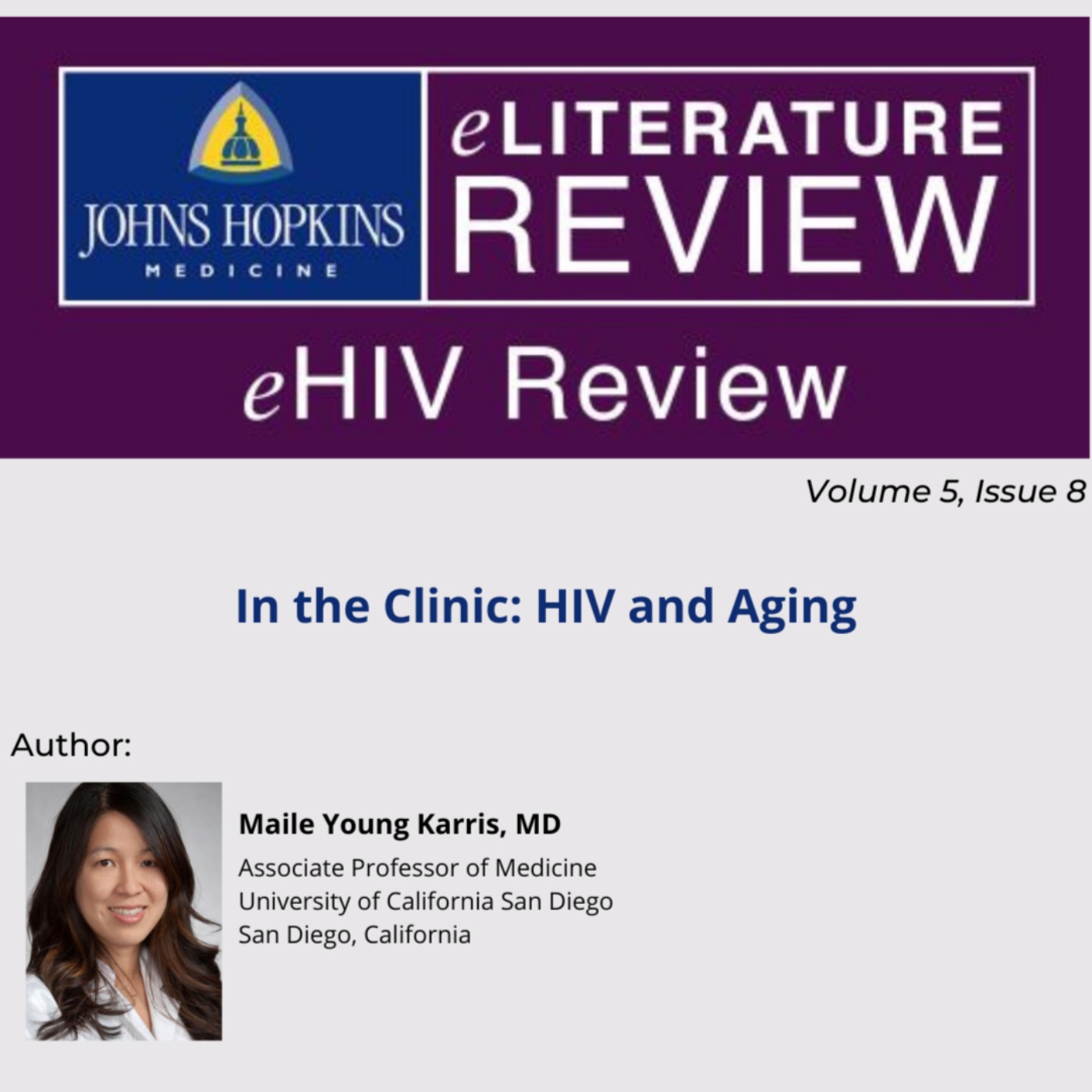 eHIV ReviewIn the Clinic: HIV and AgingTake our post-test to claim CME credits. To read a companion newsletter click here.In the US, nearly half of all people living with HIV are now aged 50 years or older. Their health care providers face new challenges in managing the effects of aging in their patients. In this eHIV Review podcast, Dr. Maile Young Karris from the University of California San Diego provides clinical insight into HIV and aging. Hosted on Acast. See acast.com/privacy for more information.2020-05-0817 min
eHIV ReviewIn the Clinic: HIV and AgingTake our post-test to claim CME credits. To read a companion newsletter click here.In the US, nearly half of all people living with HIV are now aged 50 years or older. Their health care providers face new challenges in managing the effects of aging in their patients. In this eHIV Review podcast, Dr. Maile Young Karris from the University of California San Diego provides clinical insight into HIV and aging. Hosted on Acast. See acast.com/privacy for more information.2020-05-0817 min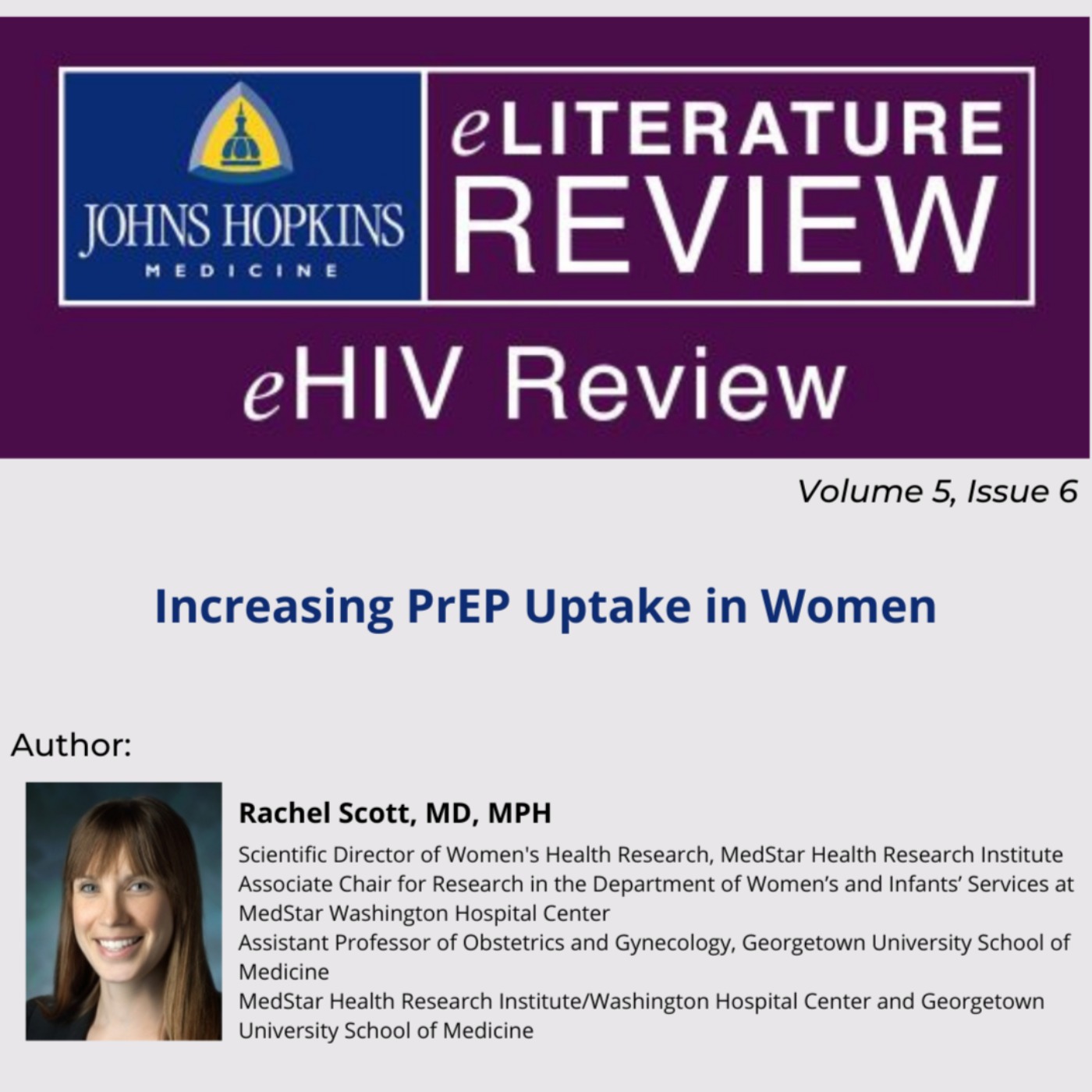 eHIV ReviewIncreasing PrEP Uptake in WomenTake our post-test to claim CME credits. To read a companion newsletter click here.In the US, among women at high risk for acquiring HIV infection, only around 2% have initiated PrEP. What are the patient, provider, and system barriers to increased PrEP uptake in this vulnerable population? What can clinicians do to overcome these barriers? In this issue, Dr. Rachel Scott, Scientific Director of Women's Health Research at the MedStar Health Research Institute and Assistant Professor of Obstetrics and Gynecology at the Georgetown University School of Medicine, provides some answers...2020-04-0317 min
eHIV ReviewIncreasing PrEP Uptake in WomenTake our post-test to claim CME credits. To read a companion newsletter click here.In the US, among women at high risk for acquiring HIV infection, only around 2% have initiated PrEP. What are the patient, provider, and system barriers to increased PrEP uptake in this vulnerable population? What can clinicians do to overcome these barriers? In this issue, Dr. Rachel Scott, Scientific Director of Women's Health Research at the MedStar Health Research Institute and Assistant Professor of Obstetrics and Gynecology at the Georgetown University School of Medicine, provides some answers...2020-04-0317 min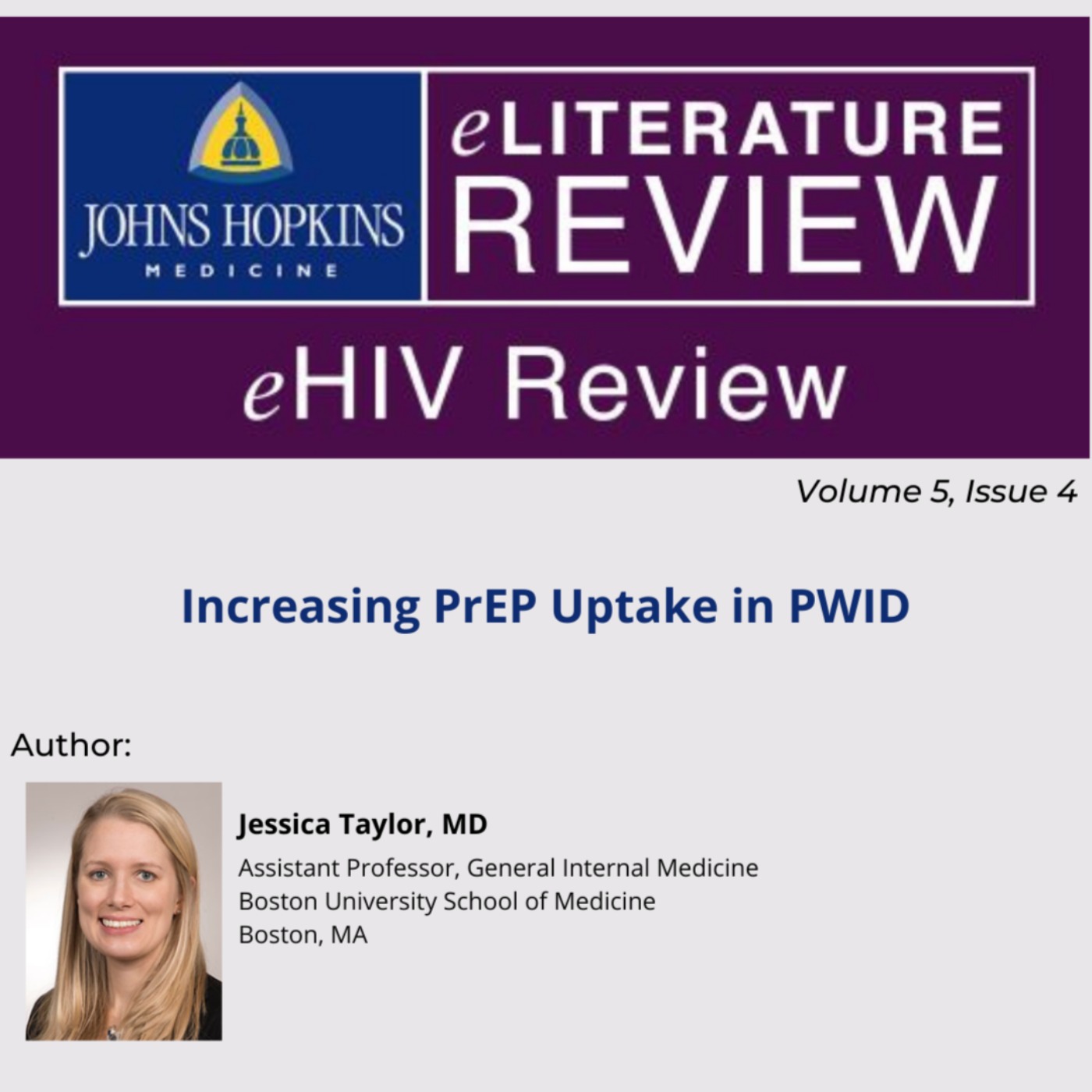 eHIV ReviewIncreasing PrEP Uptake in PWIDTake our post-test to claim CME credits. To read a companion newsletter click here.People who inject drugs (PWID) are at risk for HIV infection from both sexual- as well as injection-related causes. What can clinicians do to reduce the incidence of infection and improve their patients’ health?In this issue, Dr. Jessica Taylor from The Boston University School of Medicine and Boston Medical Center takes us into the clinic to explain how current evidence-based strategies can increase the uptake of HIV pre-exposure prophylaxis in this vulnerable population.2020-03-0925 min
eHIV ReviewIncreasing PrEP Uptake in PWIDTake our post-test to claim CME credits. To read a companion newsletter click here.People who inject drugs (PWID) are at risk for HIV infection from both sexual- as well as injection-related causes. What can clinicians do to reduce the incidence of infection and improve their patients’ health?In this issue, Dr. Jessica Taylor from The Boston University School of Medicine and Boston Medical Center takes us into the clinic to explain how current evidence-based strategies can increase the uptake of HIV pre-exposure prophylaxis in this vulnerable population.2020-03-0925 min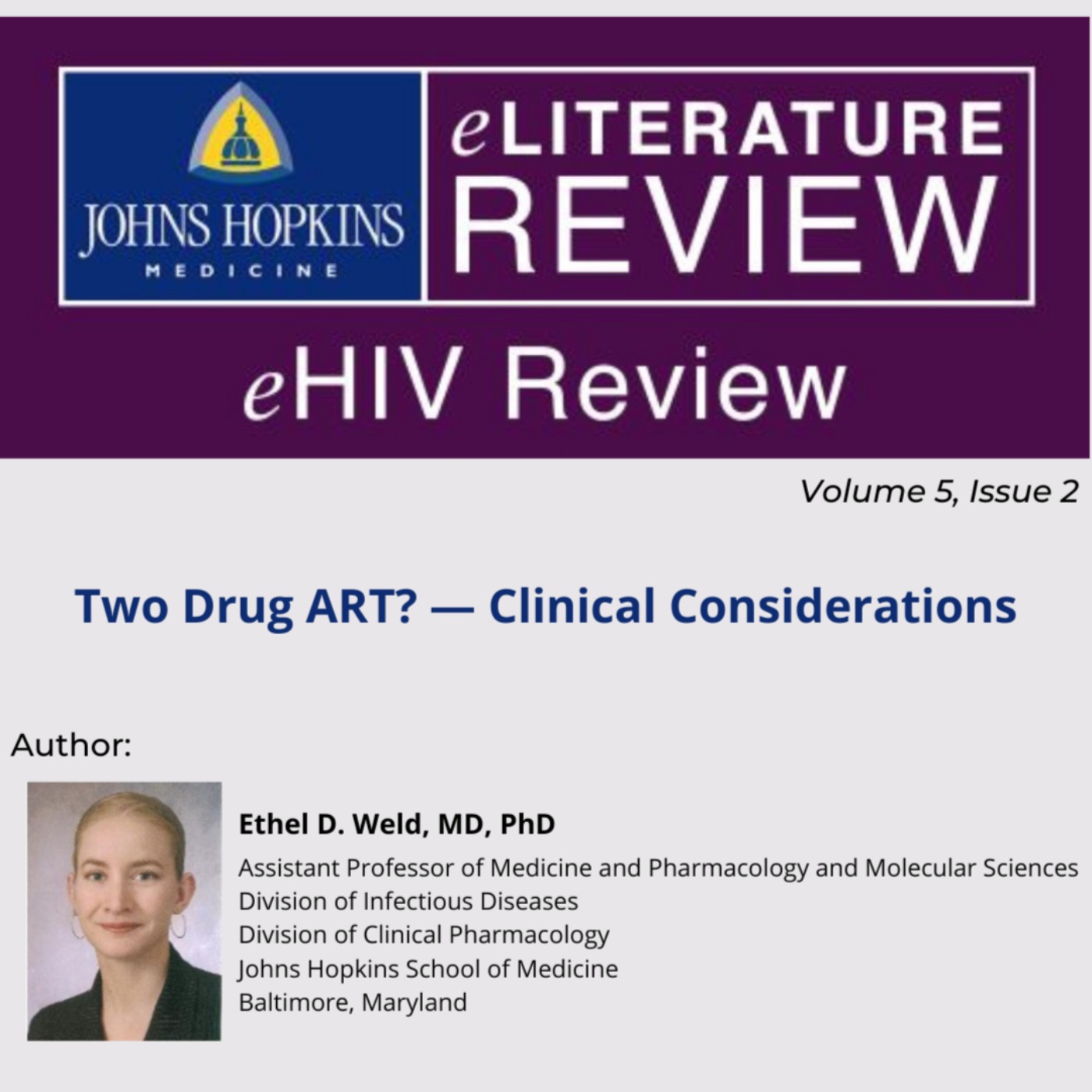 eHIV ReviewTwo Drug ART? — Clinical ConsiderationsTake our post-test to claim CME credits.To read a companion newsletter click here.In her recent newsletter issue (eHIV Review V5 #1), Dr. Ethel Weld, Assistant Professor of Medicine, Pharmacology and Molecular Sciences at the Johns Hopkins School of Medicine, analyzed the current research about the potential uses of two-drug ART regimens. Join her now for a case-based discussion about how that new information can affect patient selection in the clinic. Hosted on Acast. See acast.com/privacy for more information.2019-12-2326 min
eHIV ReviewTwo Drug ART? — Clinical ConsiderationsTake our post-test to claim CME credits.To read a companion newsletter click here.In her recent newsletter issue (eHIV Review V5 #1), Dr. Ethel Weld, Assistant Professor of Medicine, Pharmacology and Molecular Sciences at the Johns Hopkins School of Medicine, analyzed the current research about the potential uses of two-drug ART regimens. Join her now for a case-based discussion about how that new information can affect patient selection in the clinic. Hosted on Acast. See acast.com/privacy for more information.2019-12-2326 min DKBmed RadioTwo Drug ART? — Clinical ConsiderationsIn her recent newsletter issue (eHIV Review V5 #1), Dr. Ethel Weld, Assistant Professor of Medicine, Pharmacology and Molecular Sciences at the Johns Hopkins School of Medicine, analyzed the current research about the potential uses of two-drug ART regimens. Join her now for a case-based discussion about how that new information can affect patient selection in the clinic.Take our post-test to claim CME credits.To read a companion newsletter click here.The post Two Drug ART? — Clinical Considerations appeared first on DKBmed Radio. Hosted on Acast. See acast.com/privacy for mo...2019-12-2326 min
DKBmed RadioTwo Drug ART? — Clinical ConsiderationsIn her recent newsletter issue (eHIV Review V5 #1), Dr. Ethel Weld, Assistant Professor of Medicine, Pharmacology and Molecular Sciences at the Johns Hopkins School of Medicine, analyzed the current research about the potential uses of two-drug ART regimens. Join her now for a case-based discussion about how that new information can affect patient selection in the clinic.Take our post-test to claim CME credits.To read a companion newsletter click here.The post Two Drug ART? — Clinical Considerations appeared first on DKBmed Radio. Hosted on Acast. See acast.com/privacy for mo...2019-12-2326 min eHIV Review“U=U” — Clinical ConsiderationsVolume 4, Issue 12“U=U” — an Undetectable HIV viral load means Untransmittable HIV virus. In her recent eHIV Newsletter Issue (Vol. 4; No. 11), Dr. Jill Blumenthal from the Division of Infectious Diseases and Global Public Health at the University of California San Diego analyzed the current evidence strongly supporting this concept. In this Podcast, she discusses “U=U” from the clinical perspective, and models how it can help promote patient safety. Take our post-test to claim CME credits. To read a companion newsletter click here The post “U...2019-07-2523 min
eHIV Review“U=U” — Clinical ConsiderationsVolume 4, Issue 12“U=U” — an Undetectable HIV viral load means Untransmittable HIV virus. In her recent eHIV Newsletter Issue (Vol. 4; No. 11), Dr. Jill Blumenthal from the Division of Infectious Diseases and Global Public Health at the University of California San Diego analyzed the current evidence strongly supporting this concept. In this Podcast, she discusses “U=U” from the clinical perspective, and models how it can help promote patient safety. Take our post-test to claim CME credits. To read a companion newsletter click here The post “U...2019-07-2523 min eHIV ReviewClinical Aspects of Improving ART AdherenceVolume 4, Issue 10In this Issue, Dr. Joyce Jones from the Johns Hopkins University School of Medicine and Dr. Barbara Taylor from the University of Texas Health Science Center at San Antonio analyze recent publications describing evidence-based ART adherence interventions and how they can be tailored to specific situations to increase effectiveness. Take our post-test to claim CME credits. To read a companion newsletter click here The post Clinical Aspects of Improving ART Adherence appeared first on DKBmed Radio. Hosted...2019-06-1426 min
eHIV ReviewClinical Aspects of Improving ART AdherenceVolume 4, Issue 10In this Issue, Dr. Joyce Jones from the Johns Hopkins University School of Medicine and Dr. Barbara Taylor from the University of Texas Health Science Center at San Antonio analyze recent publications describing evidence-based ART adherence interventions and how they can be tailored to specific situations to increase effectiveness. Take our post-test to claim CME credits. To read a companion newsletter click here The post Clinical Aspects of Improving ART Adherence appeared first on DKBmed Radio. Hosted...2019-06-1426 min eHIV ReviewClinical Perspective: New AEs from Newer ARTVolume 4, Issue 8While newer antiviral agents like darunavir and the integrase strand transfer inhibitor (INSTI) dolutegravir have shown great efficacy, recent postmarketing surveillance has identified important adverse effects not found in the clinical trial populations.In this issue, Dr. Cody Chastain from the Division of Infectious Diseases at Vanderbilt University Medical Center discusses how these new findings can impact the clinical use of these new agents. Take our post-test to claim CME credits. To read a companion newsletter click here 2019-04-1023 min
eHIV ReviewClinical Perspective: New AEs from Newer ARTVolume 4, Issue 8While newer antiviral agents like darunavir and the integrase strand transfer inhibitor (INSTI) dolutegravir have shown great efficacy, recent postmarketing surveillance has identified important adverse effects not found in the clinical trial populations.In this issue, Dr. Cody Chastain from the Division of Infectious Diseases at Vanderbilt University Medical Center discusses how these new findings can impact the clinical use of these new agents. Take our post-test to claim CME credits. To read a companion newsletter click here 2019-04-1023 min eHIV ReviewClinical Challenges of Engaging PWID and MSM in HIV CareVolume 4, Issue 6.Linking high-risk populations like PWIDs (people who inject drugs) and MSM (men who have sex with men) to effective HIV care requires overcoming complex barriers unique to these groups.In this issue, two of the directors from Boston’s Health Care for the Homeless Program, Dr. Jennifer Brody, Director of HIV Services and ANP Marguerite Beiser, Director of HCV Services, discuss the clinical aspects of addressing these challenges.Take our post-test to claim CME credits.To read a companion newsletter click he...2019-01-3122 min
eHIV ReviewClinical Challenges of Engaging PWID and MSM in HIV CareVolume 4, Issue 6.Linking high-risk populations like PWIDs (people who inject drugs) and MSM (men who have sex with men) to effective HIV care requires overcoming complex barriers unique to these groups.In this issue, two of the directors from Boston’s Health Care for the Homeless Program, Dr. Jennifer Brody, Director of HIV Services and ANP Marguerite Beiser, Director of HCV Services, discuss the clinical aspects of addressing these challenges.Take our post-test to claim CME credits.To read a companion newsletter click he...2019-01-3122 min eHIV ReviewIn the Clinic: ART and Metabolic EffectsVolume 4, Issue 4.The incidence of the metabolic complications common in people with HIV infection — bone disease, weight gain, cardiovascular disease, and liver disease — is increasing as improved antiretroviral therapies create longer lifespans.In this issue, Dr. Suman Srinivasa and nurse practitioner Kathleen Fitch from Harvard Medical School discuss how to identify and manage these metabolic complications to help improve outcomes and quality of life in patients living with HIV.Take our post-test to claim CME credits.To read a companion news...2018-11-2923 min
eHIV ReviewIn the Clinic: ART and Metabolic EffectsVolume 4, Issue 4.The incidence of the metabolic complications common in people with HIV infection — bone disease, weight gain, cardiovascular disease, and liver disease — is increasing as improved antiretroviral therapies create longer lifespans.In this issue, Dr. Suman Srinivasa and nurse practitioner Kathleen Fitch from Harvard Medical School discuss how to identify and manage these metabolic complications to help improve outcomes and quality of life in patients living with HIV.Take our post-test to claim CME credits.To read a companion news...2018-11-2923 min eHIV ReviewNew ART Agents: A Clinical PerspectiveVolume 4, Issue 2.To read a companion newsletter click here.The post New ART Agents: A Clinical Perspective appeared first on DKBmed Radio. Hosted on Acast. See acast.com/privacy for more information.2018-09-2730 min
eHIV ReviewNew ART Agents: A Clinical PerspectiveVolume 4, Issue 2.To read a companion newsletter click here.The post New ART Agents: A Clinical Perspective appeared first on DKBmed Radio. Hosted on Acast. See acast.com/privacy for more information.2018-09-2730 min eHIV ReviewIn The Clinic: Improving Outcomes in At-Risk PopulationsVolume 3, Issue 8.In this podcast Drs. Allison Agwu evaluates the specific barriers to testing and entering into care among transsexual individuals, migrant and immigrant populations, and adolescents.Take our post-test to claim CME credits.To read a companion newsletter click here.The post In The Clinic: Improving Outcomes in At-Risk Populations appeared first on DKBmed Radio. Hosted on Acast. See acast.com/privacy for more information.2018-04-0927 min
eHIV ReviewIn The Clinic: Improving Outcomes in At-Risk PopulationsVolume 3, Issue 8.In this podcast Drs. Allison Agwu evaluates the specific barriers to testing and entering into care among transsexual individuals, migrant and immigrant populations, and adolescents.Take our post-test to claim CME credits.To read a companion newsletter click here.The post In The Clinic: Improving Outcomes in At-Risk Populations appeared first on DKBmed Radio. Hosted on Acast. See acast.com/privacy for more information.2018-04-0927 min eHIV ReviewNew Advances in ARTVolume 3, Issue 6.In this podcast about ART, Dr. Rachel Simmons from Boston University School of Medicine discusses recent research that may improve clinicians' ability to more effectively and more safely manage their patients with HIV infection.Take our post-test to claim CME credits.To read a companion newsletter click here.The post New Advances in ART appeared first on DKBmed Radio. Hosted on Acast. See acast.com/privacy for more information.2018-01-3131 min
eHIV ReviewNew Advances in ARTVolume 3, Issue 6.In this podcast about ART, Dr. Rachel Simmons from Boston University School of Medicine discusses recent research that may improve clinicians' ability to more effectively and more safely manage their patients with HIV infection.Take our post-test to claim CME credits.To read a companion newsletter click here.The post New Advances in ART appeared first on DKBmed Radio. Hosted on Acast. See acast.com/privacy for more information.2018-01-3131 min eHIV ReviewPre-Exposure Prophylaxis: Addressing Provider and Patient BarriersVolume 3, Issue 4.In this podcast, Dr. Douglas Krakower discusses pre-exposure prophylaxis and addresses provider and patient barriers to PrEP.Take our post-test to claim CME credits.To read a companion newsletter click here.The post Pre-Exposure Prophylaxis: Addressing Provider and Patient Barriers appeared first on DKBmed Radio. Hosted on Acast. See acast.com/privacy for more information.2017-11-1833 min
eHIV ReviewPre-Exposure Prophylaxis: Addressing Provider and Patient BarriersVolume 3, Issue 4.In this podcast, Dr. Douglas Krakower discusses pre-exposure prophylaxis and addresses provider and patient barriers to PrEP.Take our post-test to claim CME credits.To read a companion newsletter click here.The post Pre-Exposure Prophylaxis: Addressing Provider and Patient Barriers appeared first on DKBmed Radio. Hosted on Acast. See acast.com/privacy for more information.2017-11-1833 min eHIV ReviewHIV: Management of Concomitant ConditionsVolume 3, Issue 2.In this podcast Dr. Alysse Wurcel discusses important drug-drug interactions that may impact the treatment of ischemic heart disease in people living with HIV, medication interactions that could influence the treatment of common comorbid diseases, and potential drug-drug interactions between antiretroviral agents and common over-the-counter medications.Take our post-test to claim CME credits.To read a companion newsletter click here.The post HIV: Management of Concomitant Conditions appeared first on DKBmed Radio. Hosted on Acast. See acast.com/privacy for more information.2017-09-3027 min
eHIV ReviewHIV: Management of Concomitant ConditionsVolume 3, Issue 2.In this podcast Dr. Alysse Wurcel discusses important drug-drug interactions that may impact the treatment of ischemic heart disease in people living with HIV, medication interactions that could influence the treatment of common comorbid diseases, and potential drug-drug interactions between antiretroviral agents and common over-the-counter medications.Take our post-test to claim CME credits.To read a companion newsletter click here.The post HIV: Management of Concomitant Conditions appeared first on DKBmed Radio. Hosted on Acast. See acast.com/privacy for more information.2017-09-3027 min eHIV ReviewHIV and AlcoholVolume 2, Issue 12.Geetanjali Chander, MD, MPH, Associate Professor of Medicine covers the important topic of HIV and Alcohol in the format of case-study scenarios for the clinical practice.The post HIV and Alcohol appeared first on DKBmed Radio. Hosted on Acast. See acast.com/privacy for more information.2015-05-2828 min
eHIV ReviewHIV and AlcoholVolume 2, Issue 12.Geetanjali Chander, MD, MPH, Associate Professor of Medicine covers the important topic of HIV and Alcohol in the format of case-study scenarios for the clinical practice.The post HIV and Alcohol appeared first on DKBmed Radio. Hosted on Acast. See acast.com/privacy for more information.2015-05-2828 min eHIV ReviewCurrent Issues in HIV/HCV CoinfectionVolume 2, Issue 10.Shobha Swaminathan, MD, Assistant Professor of Medicine in the Divisions of Infectious Diseases at Rutgers New Jersey Medical School, covers the important topic of Current Issues in HIV/HCV Coinfection.The post Current Issues in HIV/HCV Coinfection appeared first on DKBmed Radio. Hosted on Acast. See acast.com/privacy for more information.2015-03-2630 min
eHIV ReviewCurrent Issues in HIV/HCV CoinfectionVolume 2, Issue 10.Shobha Swaminathan, MD, Assistant Professor of Medicine in the Divisions of Infectious Diseases at Rutgers New Jersey Medical School, covers the important topic of Current Issues in HIV/HCV Coinfection.The post Current Issues in HIV/HCV Coinfection appeared first on DKBmed Radio. Hosted on Acast. See acast.com/privacy for more information.2015-03-2630 min eHIV ReviewHIV-Associated Cardiovascular Disease: An UpdateVolume 2, Issue 8.Thomas Metkus, MD, Fellow in cardiovascular medicine, covers the important topic of HIV-Associated Cardiovascular Disease in the format of case-study scenarios for the clinical practice.The post HIV-Associated Cardiovascular Disease: An Update appeared first on DKBmed Radio. Hosted on Acast. See acast.com/privacy for more information.2015-01-2925 min
eHIV ReviewHIV-Associated Cardiovascular Disease: An UpdateVolume 2, Issue 8.Thomas Metkus, MD, Fellow in cardiovascular medicine, covers the important topic of HIV-Associated Cardiovascular Disease in the format of case-study scenarios for the clinical practice.The post HIV-Associated Cardiovascular Disease: An Update appeared first on DKBmed Radio. Hosted on Acast. See acast.com/privacy for more information.2015-01-2925 min eHIV ReviewTreating Youth and Young Adults With HIV InfectionVolume 2, Issue 6.Allison Agwu, Associate Professor of Pediatrics and Infectious Diseases, covers the important topic of Treating Youth and Young Adults with HIV Infection in the format of case-study scenarios for the clinical practice.The post Treating Youth and Young Adults With HIV Infection appeared first on DKBmed Radio. Hosted on Acast. See acast.com/privacy for more information.2014-11-2533 min
eHIV ReviewTreating Youth and Young Adults With HIV InfectionVolume 2, Issue 6.Allison Agwu, Associate Professor of Pediatrics and Infectious Diseases, covers the important topic of Treating Youth and Young Adults with HIV Infection in the format of case-study scenarios for the clinical practice.The post Treating Youth and Young Adults With HIV Infection appeared first on DKBmed Radio. Hosted on Acast. See acast.com/privacy for more information.2014-11-2533 min eHIV ReviewNew Recommendations for HAART in HIVVolume 2, Issue 4.Joel Gallant, MD, MPH, Associate Medical Director of Specialty Services at Southwest CARE Center, covers the important topic of new recommendations for HAART in HIV in the format of case-study scenarios for the clinical practice.The post New Recommendations for HAART in HIV appeared first on DKBmed Radio. Hosted on Acast. See acast.com/privacy for more information.2014-09-2529 min
eHIV ReviewNew Recommendations for HAART in HIVVolume 2, Issue 4.Joel Gallant, MD, MPH, Associate Medical Director of Specialty Services at Southwest CARE Center, covers the important topic of new recommendations for HAART in HIV in the format of case-study scenarios for the clinical practice.The post New Recommendations for HAART in HIV appeared first on DKBmed Radio. Hosted on Acast. See acast.com/privacy for more information.2014-09-2529 min eHIV ReviewWomen and HIVVolume 2, Issue 2.Jean Anderson, MD, Professor of Gynecology and Obstetrics, and Medicine, and Jenell Coleman, MD, Assistant Professor of Gynecology and Obstetrics, and Medicine at the Johns Hopkins University School of Medicine discuss the important topic of Women and HIV in the format of case-study scenarios for the clinical practice.The post Women and HIV appeared first on DKBmed Radio. Hosted on Acast. See acast.com/privacy for more information.2014-07-3136 min
eHIV ReviewWomen and HIVVolume 2, Issue 2.Jean Anderson, MD, Professor of Gynecology and Obstetrics, and Medicine, and Jenell Coleman, MD, Assistant Professor of Gynecology and Obstetrics, and Medicine at the Johns Hopkins University School of Medicine discuss the important topic of Women and HIV in the format of case-study scenarios for the clinical practice.The post Women and HIV appeared first on DKBmed Radio. Hosted on Acast. See acast.com/privacy for more information.2014-07-3136 min eHIV ReviewEmerging Promises and Challenges with the Use of Antiretroviral Therapy for Prevention of HIV TransmissionVolume 1, Issue 12.Dr. Kenneth H. Mayer from Harvard discusses the important issues related to Pre-Exposure Prophylaxis (PrEP) in HIV-uninfected individuals at high-risk and reviews the results of several key studies that evaluated the use of PrEP.The post Emerging Promises and Challenges with the Use of Antiretroviral Therapy for Prevention of HIV Transmission appeared first on DKBmed Radio. Hosted on Acast. See acast.com/privacy for more information.2013-05-2130 min
eHIV ReviewEmerging Promises and Challenges with the Use of Antiretroviral Therapy for Prevention of HIV TransmissionVolume 1, Issue 12.Dr. Kenneth H. Mayer from Harvard discusses the important issues related to Pre-Exposure Prophylaxis (PrEP) in HIV-uninfected individuals at high-risk and reviews the results of several key studies that evaluated the use of PrEP.The post Emerging Promises and Challenges with the Use of Antiretroviral Therapy for Prevention of HIV Transmission appeared first on DKBmed Radio. Hosted on Acast. See acast.com/privacy for more information.2013-05-2130 min eHIV ReviewHuman Immunodeficiency Virus and Hepatitis C Virus CoinfectionVolume 1, Issue 10.Our guest author is Mark Sulkowski, MD, Professor of Medicine, Medical Director of the Viral Hepatitis Center, Division of Infectious Diseases and Gastroenterology/Hepatology at the Johns Hopkins University School of Medicine in Baltimore, Maryland.The post Human Immunodeficiency Virus and Hepatitis C Virus Coinfection appeared first on DKBmed Radio. Hosted on Acast. See acast.com/privacy for more information.2013-03-1935 min
eHIV ReviewHuman Immunodeficiency Virus and Hepatitis C Virus CoinfectionVolume 1, Issue 10.Our guest author is Mark Sulkowski, MD, Professor of Medicine, Medical Director of the Viral Hepatitis Center, Division of Infectious Diseases and Gastroenterology/Hepatology at the Johns Hopkins University School of Medicine in Baltimore, Maryland.The post Human Immunodeficiency Virus and Hepatitis C Virus Coinfection appeared first on DKBmed Radio. Hosted on Acast. See acast.com/privacy for more information.2013-03-1935 min eHIV ReviewHIV-Associated Neurocognitive Disorder (HAND)Volume 1, Issue 8.Drs Justin McArthur and Bryan Smith present three patient cases on the topic of HIV-Associated Neurocognitive Disorder (HAND)The post HIV-Associated Neurocognitive Disorder (HAND) appeared first on DKBmed Radio. Hosted on Acast. See acast.com/privacy for more information.2013-01-1533 min
eHIV ReviewHIV-Associated Neurocognitive Disorder (HAND)Volume 1, Issue 8.Drs Justin McArthur and Bryan Smith present three patient cases on the topic of HIV-Associated Neurocognitive Disorder (HAND)The post HIV-Associated Neurocognitive Disorder (HAND) appeared first on DKBmed Radio. Hosted on Acast. See acast.com/privacy for more information.2013-01-1533 min eHIV ReviewBone Health, Vitamin D, and HIVVolume 1, Issue 6.Dr. Todd Brown, Associate Professor of Medicine in the Division of Endocrinology and Metabolism at The Johns Hopkins University School of Medicine will explain the management of an HIV-infected person with osteoporosis, and discuss the controversies surrounding vitamin D screening and treatment.The post Bone Health, Vitamin D, and HIV appeared first on DKBmed Radio. Hosted on Acast. See acast.com/privacy for more information.2012-11-2033 min
eHIV ReviewBone Health, Vitamin D, and HIVVolume 1, Issue 6.Dr. Todd Brown, Associate Professor of Medicine in the Division of Endocrinology and Metabolism at The Johns Hopkins University School of Medicine will explain the management of an HIV-infected person with osteoporosis, and discuss the controversies surrounding vitamin D screening and treatment.The post Bone Health, Vitamin D, and HIV appeared first on DKBmed Radio. Hosted on Acast. See acast.com/privacy for more information.2012-11-2033 min eHIV ReviewLinkage and Retention in HIV Medical CareVolume 1, Issue 4.Our Guest Author is Michael Mugavero, MD, Associate Professor of Medicine and Director of the Center for AIDS Research Clinical Core at the University of Alabama at Birmingham.The post Linkage and Retention in HIV Medical Care appeared first on DKBmed Radio. Hosted on Acast. See acast.com/privacy for more information.2012-09-1837 min
eHIV ReviewLinkage and Retention in HIV Medical CareVolume 1, Issue 4.Our Guest Author is Michael Mugavero, MD, Associate Professor of Medicine and Director of the Center for AIDS Research Clinical Core at the University of Alabama at Birmingham.The post Linkage and Retention in HIV Medical Care appeared first on DKBmed Radio. Hosted on Acast. See acast.com/privacy for more information.2012-09-1837 min eHIV ReviewScreening and Management of Older Patients with HIVVolume 1, Issue 2.Dr. Kelly Gebo, Associate Professor of Medicine and Epidemiology at the Johns Hopkins Unviersity School of Medicine will discuss the screening of older patients for HIV risk factors. She will also explain the issues of polypharmacy in older HIV infected patients.The post Screening and Management of Older Patients with HIV appeared first on DKBmed Radio. Hosted on Acast. See acast.com/privacy for more information.2012-07-1732 min
eHIV ReviewScreening and Management of Older Patients with HIVVolume 1, Issue 2.Dr. Kelly Gebo, Associate Professor of Medicine and Epidemiology at the Johns Hopkins Unviersity School of Medicine will discuss the screening of older patients for HIV risk factors. She will also explain the issues of polypharmacy in older HIV infected patients.The post Screening and Management of Older Patients with HIV appeared first on DKBmed Radio. Hosted on Acast. See acast.com/privacy for more information.2012-07-1732 min